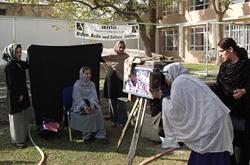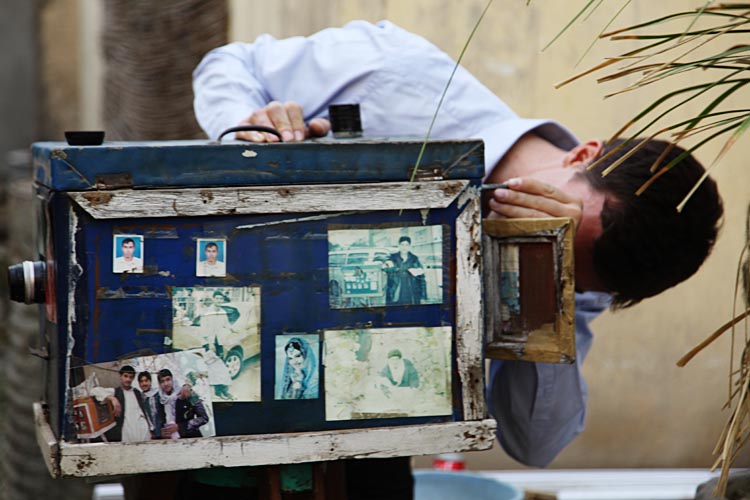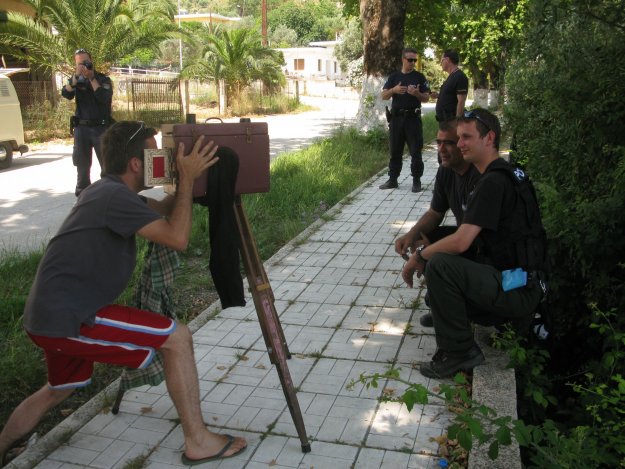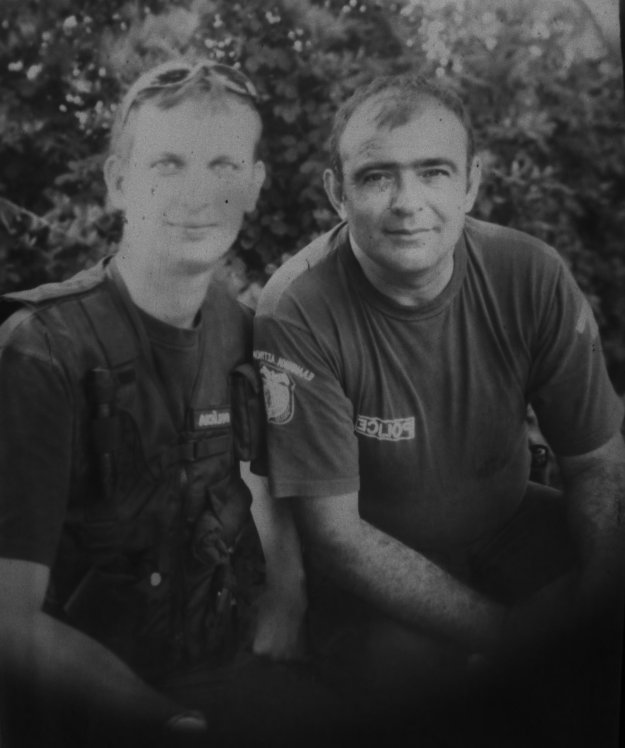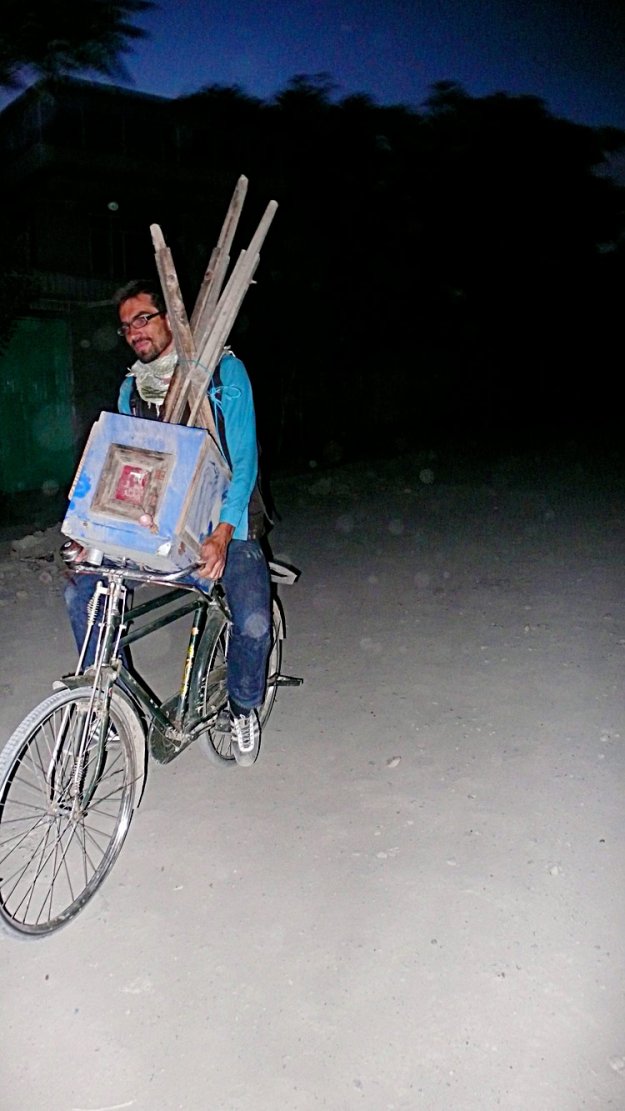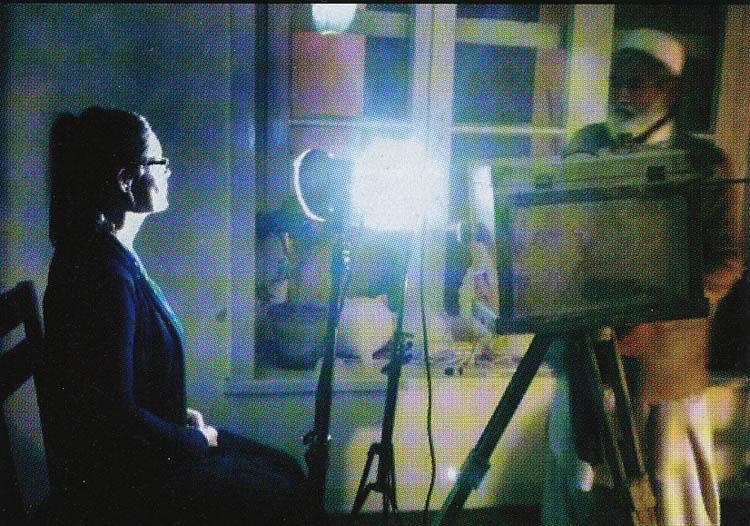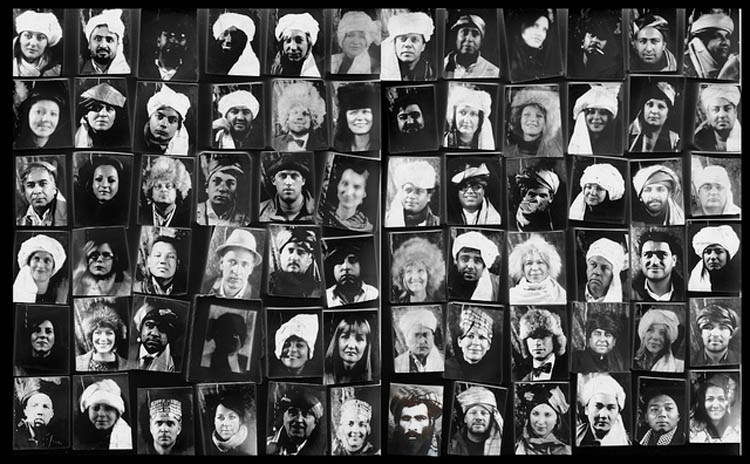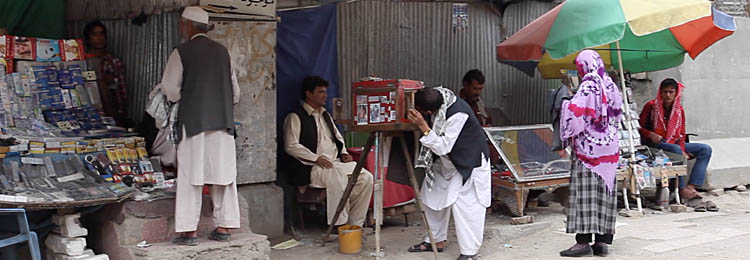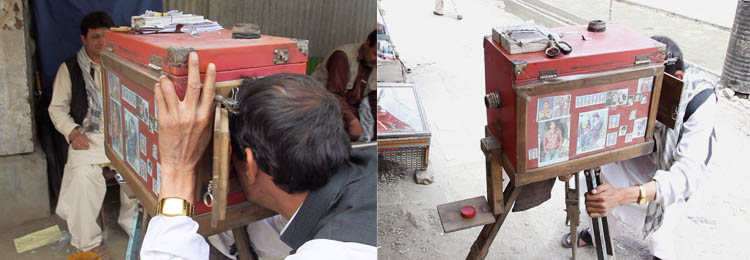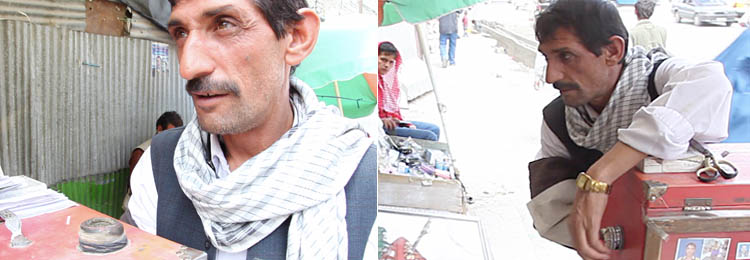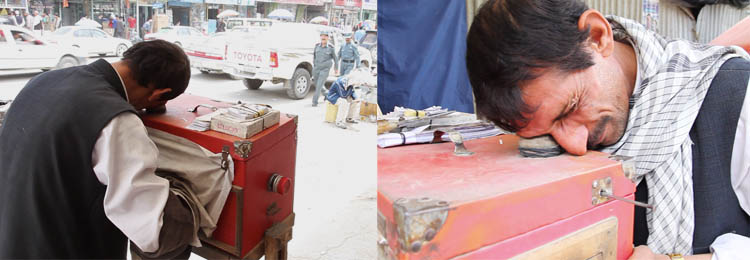
|
|
|
|
ABOUT PHOTOGRAPHY IN AFGHANISTAN
.................... ......................Published on the front page of THE GRAPHIC July 12, 1897. Source: The British Library In May 1879 about seventy miles east of Kabul an Irish photographer by the name of John Burke was producing some of the first photographs ever taken in Afghanistan. Burke had been travelling with the British army since 1878, initially advancing towards Kabul from present‐day Pakistan in a military engagement that would be known as the Second Anglo‐ Afghan War (there had already been a ‘First’ between 1839 and 1842 and there would in due course be a ‘Third’ in 1919). The sketch above which appeared on the front page of a British publication The Graphic shows Burke posing Yakub Khan, the then ruler of Afghanistan for a portrait; in the bottom sketch Burke is explaining the development process to the monarch. The photographic process Burke used, the wet collodion process, is by today's standards highly laborious, as it involved coating a glass‐plate with chemicals; it was also very expensive meaning every plate must have been precious to Burke who had to sell his work. The great advantage of the process, however, was its reproducibility as it was the first popular photographic process to create a negative image on a transparent medium which could then be reproduced. Here’s a short video from the Getty Museum explaining the process step‐by‐step. ................. ....................
Below is one of the photographs Burke took that day alongside an engraved print of the photograph that appeared in The Graphic. The engravings that appeared in publications at the time were based on both photographs and hand‐drawn sketches; and also on sketches of photographs. .. .. The conflict Burke was reporting on was part of the 'Great Game' ‐ a deadly vying of interests between the world's most powerful empires, Britain and Russia. The British invaded Afghanistan essentially to stop the Russians getting a military foothold in the region from where they might threaten the jewel of Britain's empire, India, with invasion – and the story was highly newsworthy. A number of Burke's photographs from the military campaign appeared in publications at the time as well as being sold in photo‐catalogues after the war. Some of them can be viewed at the British Library's online catalogue. And here’s an interesting short film by the photographer Simon Norfolk which gives a sense of the environment Burke worked in. Norfolk traveled to Afghanistan in 2010 trailing John Burke’s photographic route from the Second Anglo‐Afghan War in the context of the present war in Afghanistan. ....................
However, Burke was not alone in his photographic endeavours in Afghanistan. Among others taking photographs during the military campaign were the Bengal Sapper and Miners, an engineering corps attached to the Peshawar Valley Field Force, the same military unit Burke travelled with. Here are some of the panoramic photos they took.
While Benjamin Simpson, a doctor based in southern Afghanistan with the British Army during the Second Anglo‐Afghan War and an amateur photographer took a series of photographs around Kandahar. This photograph showing a royal residence in Kandahar was taken around 1881. ..................... After the war Charles Ludlorf Griebach, who was employed by the Geological Survey of India, travelled to Afghanistan where he photographed archeological sites. This photo of a statue of the Buddha in Bamiyan in the centre of Afghanistan was taken between 1884 and 1886. .......................................... The photographic process in Afghanistan, at least pre‐1880, was very much in the hands of non‐Afghans; but after 1880, according to Omar Khan in his book From Kashmir to Kabul, Afghan noblemen could be found with cameras. This was because of the development of dry‐ plate photography ‐ basically what we refer to as film ‐ by George Eastman of Kodak fame, making photography cheaper and less technically demanding, and as a result far more widespread. It would, in fact, eventually become a hobby of the Afghan royal family. The first Afghan ruler known to be photographed was Amir Sher Ali. The photograph below was taken in 1869 by John Burke at the Ambala Durbar (a grand ceremonial meeting) in British India where the Amir was negotiating a treaty with the British. ........................................... When Sher Ali died in 1879, his son Habibullah succeeded him. Habibullah was something of a moderniser (albeit a conservatively‐paced one) and a keen photographer who set up his own photo studio in the royal palace – the first of its kind in Afghanistan. He also organised photo exhibitions in the royal gardens where sales from his prints were donated to an orphanage he founded in 1911; and he organised photographic competitions that were advertised in a newspaper called Siraj Al‐Akhbar. This is a picture of him in the newspaper in 1912. ..................................................................Click on the image to enlarge ........................................... Siraj Al‐Akhbar meaning “Torch of the News” was established in 1911 by the Afghan intellectual Mahmud Beg Tarzi who would later become the Afghan foreign minister. It was, in an agenda‐pushing sense, a ‘progressive’ newspaper devoting much space to articles on science and technology. By its second year of operation it began to be printed on a more advance press. As a result photographs intended for an Afghan audience appeared in print in Afghanistan for the first time, and in a relatively high volume. Though the newspaper wasn’t a publication for the masses – who couldn’t read; it’s biggest audience were the government employees whose wages were compulsorily docked for the publication on a monthly basis. Here are some of the photos that appeared in the newspaper.
In February 1919 Amir Habibullah was assassinated. His son Amanullah succeeded him. In a bid to strengthen himself politically Amanullah then instigated the Third Anglo‐Afghan War by invading Afghan’s eastern neighbor, British India. The Afghans felt much resentment towards the British at the time for controlling their foreign policy – one of the repercussions of the Second Anglo‐Afghan War. Here’s a photograph taken at the announcement of the war; Amanullah has his back to the camera. ................. This is what Amanullah looks like from the front – or at least an artist's rendition of him we came across in a digital photo‐studio in Kabul. ....................................... The war resulted in two likely firsts for Afghanistan, both courtesy of the British Royal Air Force. These were: a revolutionary new perspective of the country in the form of the photographic aerial shot. And aerial bombardment. A few weeks after the war started the RAF bombed Jalalabad. A few days later they bombed the royal palace in Kabul; the picture below was taken by RAF personal during the raid over the city. Shortly after the bombing a cease-fire came into effect, the war ended, and Afghanistan gained control over its foreign affairs from Britain. ...............................
Meanwhile the Afghan royal household was producing its own photographs on the ground. The Amir’s older brother Enyatullah was an avid photographer; he as well as other members of the royal household captured unique, sometimes intimate portraits of life within the Afghan royal circle, like the photographs below of Enyatullah's sick son, Khalilullah, and Amanullah’s daughter Amina washing socks. Surviving photographs from the royal collection are archived by the Williams Afghan Media Project run by anthropologist David B. Edwards in the USA.
Amir Amanullah strived for ‐ but didn’t rule ‐ a modernised and technologically developed country along European lines; in a bid to reach such a state he introduced a series of dramatic social reforms that attacked the conservative core of Afghanistan. This would eventually lead to his downfall in 1929. But before that happened he and his queen ‐ Soraya, the daughter of Mahmud Beg Tarzi ‐ went on an extensive tour to Europe in 1928. Here’s a picture of the royal couple while in Europe. .......................... One of their stops was to the short‐lived Weimar Republic. Such an impression did they make, their visit inspired the lyrics of a popular and rather bizarre German song from 1930 by Paul O'Montis who sings of Amir Amanullah as more of a catch, romantically speaking, than Charlie Chaplin. ....................................................
Amanullah and Soraya received a rapturous welcome in Europe and left the continent laden with expensive gifts including a Junker airplane from the Germans and a Fiat armoured car from Mussolini; from the Zeiss‐Ikon factory in Dresden, the Amir ordered some photographic equipment. But who was he buying the cameras for – his brother perhaps? If so it’s probable Enyatullah never got to enjoy the gift. When Amanullah returned from Europe in July 1928, he faced a rebellion. He had been a reformist king trying to modernise Afghanistan at a startling pace – but the tribes revolted and the monarch was overthrown. The title of the photo underneath, showing Amanullah (centre) and company in western attire and which may have appeared in the press of time, sums up his predicament: Western Ideas Imported by Afghan King cause Revolt. ............... Amanullah and his family was forced to flee Afghanistan at the end of 1929. After leaving his homeland the ousted monarch lived a life in exile in Europe and eventually passed away in Switzerland in 1960. Many photographs of Amanullah and his wife Soraya survive to this day. Some of the pictures like the one below show them in affectionate poses, which contrast sharply with conservative attitudes as regards public displays between Afghan men and women. ..................................... The story of Afghan photography in the early part of the twentieth century is not exclusively a royal one however (although it is a privileged one). In the 1910s while royal photographers were working in the photo studio inside the palace in Kabul, at least one commercial photo studio operated in the city itself. According to scholars Nancy Dupree, as well as May Schinasi, the photographers who worked in these studios – the royal and commercial ‐ were Afghan, but also Indian. A provisional 'photographers tree' including the early Afghan photographers can be found here. Photography in India had flourished since it was first introduced to the country, almost as soon as it gained popularity in Europe in the 1840s. In the town of Peshawar on the border with Afghanistan in the then north‐western frontier of British India, commercial photographers such as R.B. Holmes, Mela Ram & Sons, and K.C. Mehra & Sons pursued successful careers in the early part of the twentieth century; and they profited from the military campaigns they photographed on both sides of the Afghan border. Here’s a map of British India from 1909.
And below are two photo‐postcards produced by the Peshawar‐based Prakesh Mehra showing Habibullah Kalikani, the so‐called ‘Bandit King’ of Afghanistan who overthrew Amir Amanullah in 1929. They are both postmarked July 1930, just over half a year after Habibullah was himself overthrown and executed, leaving the way open for Muhammad Nadir Shah to become the next ruler of Afghanistan.
Muhammad Nadir Shah lasted four years as leader of Afghanistan until he was assassinated in 1933. His son, Muhammad Zahir Shah, who succeeded him, would rule for four decades. During his reign Afghanistan opened up more to the rest of the world that it had ever done previously. Amongst other developments, that meant movies. In 1957 the Austrian scholar and long‐time visitor to Afghanistan Max Klimburg took the photograph below in the Kabuli teahouse ‘Gulistan’ (meaning ‘land of flowers’). Amongst the many clocks, portraits of ladies, the odd gentleman, a mirror and a peacock, are two posters advertising the then popular Indian films Char Chand and Saqi.
Indian films began to make an impact in Afghanistan in the late 1950s, and, as they do today, they completely dominated what market there was. The films wove themselves into the imaginations of the Afghans who went to see them and it's not surprising that there was a demand for photo‐montages like the mock-up we have made below, which were produced cheaply on wooden box cameras, the kamra-e-faoree. ............................. The box camera was used primarily for identification photographs but sometimes friends and relatives would pose together and have a photograph taken in postcard format; and it was cheap technology making it all the more available to the general populace. The image below of a man having his photograph taken with a box camera in Kabul is from a 1961 BBC documentary– a short clip from the film can be seen on Adam Curtis’ s BBC blog.
............................... Photography was slowly loosening its elite associations; cameras like the Afghan box camera as well as mass-produced technology was making it cheaper and more available. Below is a picture of Professor Abdul Rashid, who teaches journalism at the Kabul University, holding a 35mm camera he received as a gift in 1965 - when he was just nine years old. The camera, an Agfa Click, was brought from India, but the film he could develop in Kabul.
................................... The 1960s also brought colour photography facilities to Afghanistan.
At the other end of the portrait spectrum to box camera images, and where it was available as an alternative to colour processing, were the comparatively expensive and large hand‐coloured portraits. This is a hand‐coloured portrait of General Khotul Mohammadazai from the 1980s. She is one of two female generals in the Afghan army at present. ..................................... The portrait of General Mohammadazai is very much a reflection of the times it was taken. In 1978 a communist government took control of Afghanistan introducing a series of socialist reforms that attempted to revolutionize gender roles in the country. As a result woman began to play a more significant role in Afghan public life and were allowed to join the army as soldiers and rise in its ranks; which the general did initially as a paratrooper. Here’s a clip with the general talking about her time in the army. .......................
The communist rise to power was to be a precursor to decades of warfare in Afghanistan. First, the Soviet Union invaded in 1979 to bolster the massively unpopular communist regime and ended up fighting a protracted war against an American‐backed medley of factions; then the country was torn apart, again with outside interference, in a civil war which started in 1989 and which some consider never to have ended. The constant conflict has laid waste to Afghanistan in human and material terms; it has also caused cultural entropy. Photographs and photographic equipment were often destroyed or misplaced or simply left behind in the upheaval and destruction of wartime. In many cases irreplaceable photographic memorabilia was lost – and this before the Taliban arrived to take power in Kabul in 1996, and banned photography. The Taliban leadership considered representations of human and animals as unIslamic; and the Ministry of Vice and Virtue, the Taliban’s moral watchdog enforced an edict banning photography. In short, the hanging of portraits and the general display of images of living creatures, whether it be on a bottle of shampoo or a treasured piece of family memorabilia became a crime punishable by beatings and imprisonment. But as colour‐portraits of Taliban from the time reveal, as with those below by A. Samdi in Kabul, it wasn't necessarily a view shared by all recruits.
The ban did, however, force some individuals to destroy or hide their photographic collections. And the livelihoods of photographers were threatened by the edict, which at first encompassed a blanket ban on all types of photography. The Taliban also banned television and most other forms of entertainment. Here’s a news report on life under the Taliban from March 2001. First, the reporter visits a TV repair man who has to work in secret. ...................................
.............Source: INA Eventually, the Taliban relented from a total ban on photography, permitting identity photographs; and box camera street photographers were able to work without being harassed once they stuck to making them. But full-body shots, portraits for non-identity purposes, and particularly images of woman were more usually outlawed. The strictness of this policy does seem to have varied. Some photographers in Kabul claim they were practising portrait photography (for purposes other than identity cards) openly and without harassment towards the end of the Taliban time, while most photographers in Herat report that the Taliban restrictions (bar taking identity photos) remained in place until the Taliban were ousted from power. Some photographers turned to a trade in 'clandestine' photographs during the Taliban‐era. This meant taking full-body or coloured portraits of clients secretly with a film camera and smuggling the film across the border to photo studios in Peshawar in the north‐west of Pakistan for development. After the film was developed in Pakistan the illegal prints were returned to Kabul and handed over to the customer. This activity risked imprisonment for all involved on the Afghan side of the border. Such smuggling also occurred between Kandahar in southern Afghanistan and Quetta in Pakistan. Here's a map of the Taliban‐era film smuggling route between Kabul and Peshawar; the route travels through the tribal areas of north‐western Pakistan and over the Khyber Pass.
.............
Nowadays, parks are a good place to find photographers. Below is a clip with a photographer plying his trade around the famous Shrine of Hazrat Ali – also known as the ‘Blue Mosque’ ‐ in Mazar‐e‐Sharif. In the park surrounding the shrine, hundreds of white pigeons flock to a feeding‐spot; and it’s a good place for photographers to pick up business from visitors to the shrine and park. The camera being used is a Fuji instant analogue camera, and is similar to old Polaroid cameras.
You can also find photographers using the same type of instant camera in the Shrine of Ali (Kart-e-Sakti) in Kabul where Abdul Qadir (below) works taking photographs of visitors. Before returning to Kabul, Abdul, 48, lived in Peshawar, Pakistan for thirty years, where he learnt how to use the kamra-e-faoree before becoming a staff photographer for a Mujahedin newspaper in the city.
In Herat we encountered a mobile photographer walking the streets with a digital camera, a plastic flower stand and a receipt book. He worked for the Rangarang (Multicoloured) Studio who printed out the photographs he took, which he then delivered by hand to customers.
Mobile photographers also ride bicycles. Ahmad Shah Faqiri (below) returned to Kabul ten years ago from Karachi. He now travels around the city on his bicycle taking photographs of clients in recreational spots like Babur Gardens. An additional service he offers is to download mobile phone images of customers, via a bluetooth device, which he prints the same day.
In Shar‐e‐Nau park in Kabul, photographers offer the usual mobile photographer services and more, by manipulating the image to insert the customer's head on top of a novel military montage. ...............................
Montages and composite photos are widely available in photo‐studios in Kabul but the vast majority of them are individual and family portraits not militaristic montages like the one above; but they are all commonly manipulated using the computer software Photoshop. Here is a photoshopped image by Asad Ullah. ................. The original image of the portrait above was a hand-coloured black and white photograph. It was imported into Photoshop and digitally cut out from its original background. The sunglasses and the map were then digitally placed on top of the image. In addition, the background was coloured blue and the contours of the face and clothes as well as the colours were enhanced. Much of Asad Ullah's work as with the photo above involves repairing, touching up and enlarging old family photos. Below is a short film of him searching for the original of a black and white photo he has been repairing on his computer. You can also catch glimpses of other types of photographs he's working on in the film. (A video of Asad photoshopping a box camera photograph can be seen here.)
The photo‐studios we visited in Kabul and Mazar‐e‐Sharif were mostly family owned and run; we saw photographs of the family and friends of the proprietors over and over again on the walls of their shops, in the frontal displays, and inside the vitrines by the shop‐counters. ........ The personal character of photo‐studios contrasts severely with what been arguably the loudest say of the Afghanistan photographically on the international stage: war photography. In some ways Afghans are attempting to take more control of this platform and a number of photojournalist and photography courses now exist in the country. One organistaion teaching photography to young students is the Herati Photographers Association presently run by Zaher Maher Herawi. They also teach videography. The Photographers Association in Herat, banned during Taliban times, was restarted in 2003. This is a scene from the play they staged at the party to celebrate the association's revival.
A new phenomenon in Afghan photography is the female-run photographic studio intended primarily for a female clientele. A number of female photographers work in the media industry in Afghanistan and a number are hired by male-owned photo studios to take photographs at the women's celebration at weddings (Afghan wedding parties are usually divided by gender) but photo-studios owned by woman are a rarity. One female owned photo-studio, pictured below, is Yas Photography in Herat ('Yas' means jasmin flower). This is the entrance to the studio. ................................. The owner of Yas Photography, Parwana (her name means 'Butterfly'), trained in a private centre teaching digital photography to woman in Qashim, Iran ten years ago where she was living with her husband and children. In addition to taking identity portraits of woman, which is her biggest source of income, Parwana also takes childrens portraits and edits wedding photographs and videos. These images below are from the inside of her colourful studio.
In Mazar‐e‐Sharif we were told that photography in the Afghanistan was older than when the Blue Mosque was blue. And photographs exist to prove it. In Mazar‐e‐Sharif we were also told that if a black pigeon lands amongst the hundreds of white ones feeding outside the famous Blue Mosque, it will turn white in a matter of weeks. So here, in conclusion, is a metaphorical black pigeon landing amongst the many white ones of the Shrine of Hazrat Ali. Or as some might say: it's just history taking its course.
Source material for this essay included: Omar Khan’s From Kashmir to Kabul and his article War Photography in Nineteenth Century India and Afghanistan, Simon Norfolk’s Burke + Norfolk, Nancy Dupree’s summary of the KES catalogue, Louis Dupree’s Afghanistan, May Schinasi’s Afghanistan at the beginning of the 20th Century and La photographie en Afghanistan - Réflexions autour d'une collection, Pashto Mashto’s ANN blog, Afghanistan Cultural Profile, Ahmad Rashid’s Taliban, Julie Billaud’s Women’s Public Visiblity in Post‐War/Reconstruction Afghanistan (PDF) and Siddarth Varadarajan "Have fun in Afghanistan? Enjoy the weather..."(PDF)
....................................................................................
|
||||||||||||||||||||||||||||||||||
Rather than mentioning a year, photographers tended to refer to the era of a national leader to indicate the epoch they were discussing, or mention an important event such as “during the war” (civil war) or “when Karzai came to power” (the current president). The wall of the Zalmadi studio in Herat, below, with portraits of many of the former rulers of Afghanistan and the proprietor's grandfather, is a case in point.
The earliest date we can be certain that box camera photographers were working in Kabul was in the early 1950s, though it is possible photographers were using the camera in the 1940s, or according to the Afghan calender, the 1320s. ... ...Here’s a table of comparison for calendars. ............... Generations of Afghans have had their portraits taken by kamra-e-faoree photographers. Some of these photographers learnt the trade from their fathers or another male relative, while others were taken on as apprentices by established photographers of no relation. Many started so young they were initially dwarfed by the camera and would have to use a chair to operate it, as can be seen in the image below.
In the early days of box camera photography in Afghanistan it wasn't wholly unusual that photographers would be confronted with a cliental - particularly if they came from rural areas - for whom photography represented an alien magic. In some cases these pictures would have been the first images their customers had seen of themselves - or would ever see; occasionally photographers even had to convince clients that the image they had just taken was indeed their likeness – not, as we were told on one occasion, a mirror. The story below told by Hafeez from the Ramprakesh studio in Kabul about a photographer called Basheer (the brother of Rona) who went to Herat to work as a box camera photographer sixty years ago illustrates the newness of photographry for Afghans at the time. ... It should also be noted that the religious establishment in Afghanistan at the time frowned on photography for theological reasons. Islamic clerics argued (and still do) that reproducing the likeness of a living creature was the responsibility of Allah (God) alone, not that of any other human. In ecclesiastical eyes reproducing human as well as animal images was tantamount to being a Kafir (a non-believer), not a pious Muslim. This would again prove to be a thorny issue when the Taliban rose to power in Afghanistan in the 1990s, banning the public display of images of living beings. Sometime around the mid-1950s the oldest of kamra-e-faoree photographers speak of a boom in the numbers of their kind in Kabul. This was, they say, as a result of a governmental drive to distribute national identity cards countrywide, with a photo attached. In modern-day Afghanistan photographs have for decades been affixed to a multitude of official documentation: children’s school cards; soldier’s identification; driving licenses; as well as being attached to legal documentation such as that necessary in property disputes and ownership. Below on the left is a deed of title for a property in Herat with box camera photographs positioned down the right side of the document; it's over half a century old. Opposite that is a car registration certificate issued in Jalalabad with box camera photos, also on the right-hand side.
However, the mainstay of the kamra-e-faoree photographer’s trade in the early days, was it seems, to provide photographs for the Afghan national identity card: the tazkira. The tazkira is the most important identity document in Afghanistan; currently, it is obligatory for males, optional for females, and can be issued from birth. This is a gallery of images of a pre-1992 tazkira in the form of a 20-page booklet (post-1992 the tazkira came in large certificate form, which is usually photocopied into a handy size to fit in the shirt-pocket.) ..
Tazkira are around in one form or another a long time. Below is a photocopy of a tazkira from 1920 which didn't require a photograph. If you look at the bottom right-hand corner of the photocopy, you'll see a thumbprint, which was also considered a form of documentary fidelity in Afghanistan.
And here’s where you’ll find it in the National Archives. ......
The plan to attach an identity photograph to the tazkira is likely to have been a turning point in kamra-e-faoree photography in Afghanistan as it provided, with masses of potential customers, a steady and guaranteed income for photographers. After a nationwide government contract was awarded to take the photographs, dozens of new kamra-e-faoree photographers were trained and sent to towns and villages all over the country. ............... According to photographers in Kabul, it was a civil servant called Afandi who won this contract; as a result, he, along with his business partner Ahmadin Taufiq was directly responsible for training a cadre of kamra-e-faoree photographers in Afghanistan in the 1950s; who would of course go on and train other photographers. The knowledgeable Muhammad Usman pictured below claims Afandi was responsible for making the very first Afghan kamra-e-faoree. Here’s his story. ...... Requiring only a minimum of equipment, kamra-e-faoree photographers were mobile, capable of providing identity photographs quickly, and they could do so very cheaply, making kamra-e-faoree photography the first type of photography that was available relatively en masse in Afghanistan. Newly trained, photographers travelled all over the country, sometimes to remote villages where they were accompanied by government officials to fill in the paperwork and issue a tazkira on the spot. The officials would also act as age-guessers since birth records were generally not kept in Afghanistan and individuals would rarely be able to pinpoint the year of their birth. The teaming up of the kamra-e-faoree photographer with a scribe (the essential function of the accompanying official) can still be seen in Afghanistan today – after an art. Beneath is a picture of Habibullah who has been a scribe for the past thirty years. He’s sitting on the opposite side of the street to where Qalam Nabi used to work, the last working kamra-e-faoree photographer in Kabul. The man immediately to his left is also a scribe. ..... Lying beside Habibullah are a variety of forms with official stamps for various administrative purposes, and pens of different colours. Most of the forms require photographic identification as with this form Habibullah showed us below. ..... Scribes are a common sight in Kabul – the fact that there is enough work to sustain them is likely connected to the very high illiteracy rates in Afghanistan, as well as the amount of bureaucracy. It has, in fact, been the documentary requirements of this bureaucracy that has largely sustained box camera photographers in Afghanistan, at times providing them with windfalls of business. When the government of Hameed Karzai made it compulsory for all schoolchildren to be issued with yearly renewable identity cards after 2001, box camera photographers experienced a huge boom in business - fifty years after the initial surge of this photography. These images below are box camera photographs of school children taken by Ali Ahmad in Herat and surrounds, and are from the collection of Hekmatullah. .. After 2001 girls schools were allowed to re-open (they were banned under the Taliban) thus adding even more to the business of box camera photographers, as can be seen below.
Traditionally, kamra-e-faoree photographers and scribes often clustered in the same places, such as in front of government ministries, courthouses and embassies - essentially where forms requiring photographic identification needed to be filled in. But kamra-e-faoree photographers also worked from busy chowks and street junctions, as well as directly outside of photo-studios in and around the city. Here’s a map showing some of the photo-studios and street pitches where we found kamra-e-faoree photographers had been working in Kabul. ..................................................Click on the map to enlarge |
||||||||||||||||||||||||||||||||||||
Many of the photographers we met owned their own photo-studio, though this was not necessarily the standard: it has to be said our interviews were more often with studio-owning kamra-e-faoree photographers because they were easier to locate than their street-based counterparts who didn't have a studio to anchor themselves geographically (or financially for that matter, making it possibly more likely that street based photographers might drift into other types of work). If working from a studio the photographer often kept a kamra-e-faoree standing outside on the street. Inside the shop, they used a variety of cameras from 35mm cameras to large format cameras (which were also known as the 'Indian camera') to make individual and family portraits.
|
|
|||||||||||||||||||||||||||||||||||
Clearly, many kamra-e-faoree photographers are versed in more types of photography than the kamra-e-faoree. Here are some of the old cameras we found the photographers had been using at one time or another in their careers. ..
Taking photographs like these.
.. And being an adaptable craft it's not surprising that the kamra-e-faoree has found more uses other than being used exclusively for identity photographs. Afghan clients sometimes obtained kamra-e-faoree photographs as mementos, having portraits made of themselves with friends and family, like this one below.
Passing foreign photographers, photojournalists and the odd tourist also had photos taken with the kamra-e-faoree. Here's a box camera photograph of two Dutch tourists in Kunduz, Afghanistan taken in 1969.
This photograph of a British tourist in Kabul was taken over thirty years later in 2006.
While some kamra-e-faoree photographers using techniques of montage and collage that are replicated widely in both earlier large format hand-coloured photography and contemporary Afghan digital photography, have turned the camera on their own families to thrilling effect. This montage (from circa. 1950s) belongs to collection of Abdul Satar and is of his father. Naturally enough, he keeps it as a memento in his family album. ........
But any image, regardless of its original purpose, can be a memento. In 1996, the photographer Fazal Sheikh traveled to Afghan refugee camps in northern Pakistan where he was told the stories of Afghans who had lost loved ones during the Soviet invasion and the subsequent civil war. Some of the refugees possessed photographs of those they had lost; some were taken with a kamra-e-faoree. Below, Qurban Qul, one of the Afghans Fazal Sheikh met in northern Pakistan, holds a kamra-e-faoree photograph of her son Mullah Awar. He was killed fighting with the Mujahedin in 1986 when he was eighteen. Fazal Sheikh’s touching film The Victor Weeps can be seen here.
With war raging in Afghanistan since the Soviet invasion in 1979, colossal numbers of Afghans received war-related injuries. Sometimes they needed photographic proof of their injuries to claim benefits and medical attention from the clinics and organisations operating to help them. One such victim who lost an eye fighting against the Soviets was Mullah Omar, the present leader of the Taliban. Here’s a kamra-e-faoree photograph of Mullah Omar from 1993 (verified by Pakistani intelligence).
Mullah Omar’s (alleged) portrait may seem at odds with the commonly held view that the Taliban were fundamentally opposed to the depiction of the human (and animal) form - in any shape of manner. It certainly is at odds with the following Taliban edict from 1996 reprinted in Ahmed Rashid’s book Taliban (Rashid by the way stressed that any typos which appeared in the list of decrees in his book were the Taliban’s and not his.)
...... However, kamra-e-faoree photographers were allowed to operate in Taliban controlled Afghanistan - even if, as the accounts we received testify, they at first met with beatings and intimidation until the Taliban finally relented allowing kamra-e-faoree photographers to work unhindered. Here’s a picture of a kamra-e-faoree photographer taking a photograph in March 2000 during the Taliban-era in in Kabul.
The image is a frame-grab from the video camera of Alan Edelstein, an American film-maker, who was in an odd as well as precarious position whereby the Taliban had given him permission to carry a camera in the country but not to use it which they considered "unIslamic" – but of course he did (surreptitiously). Ultimately, the services of kamra-e-faoree photographers were needed by the Taliban to produce a variety of photographic identification – sometimes for Taliban themselves. Indeed after their fall, files containing images of Taliban recruits were found in the Ministry of the Interior in Kabul. It should be noted that the Taliban stance on photography was not necessarily the only or the greatest challenge to kamra-e-faoree photography. The infighting of various Mujahedin factions and warlords for control of the country after the Soviets left in 1989 wreaked havoc in Afghanistan. Kabul was a major centre of the conflict and saw a brutal period of bombardment which at its height was estimated to have killed twenty-five thousand civilians. Many photographers in Kabul had their studios destroyed or looted during this time. Those who survived and stayed on often lived in atrocious conditions. Though as the photograph below of photographer Ghulam Ahmad taking a picture of little Yaido testifies, life did continue. The photo was taken in Kabul in 1996 before the Taliban took control.
Since the 2001 invasion of Afghanistan by the United States of America and their allies, and the subsequent fall of the Taliban, there has been a huge increase in demand for photography in Kabul. Reports suggest that kamra-e-faoree photography actually flourished in the years immediately following the invasion. Photo-studios too certainly wasted no time in cashing in on a demand for personal and family portraitures. But the last decade has also marked the beginning of the end for kamra-e-faoree photography; since 2006 in particular the numbers of photographers has dwindled so rapidly that by June 2011 there were only two kamra-e-faoree photographers working on a daily basis in Kabul. In 2012 there were none. There are a number of reasons for this. While the rapid rise of digital photography and the spread of modern photo-studios has played a major role in overshadowing the use of the camera, so too has the difficulty and expense in sourcing materials, particularly photographic paper and chemicals. Here’s a picture from Rohullah, a Kabuli kamra-e-faoree photographer, in 2011; he’s holding one of his few remaining packets of Lucky photographic paper (a Chinese brand); Rohullah told us at the time that when his stock of paper runs out he would have to look for other work. ...... Within the year Rohullah had moved outside of Kabul to open a grocery store. His pitch had been taken over by a perfume seller, shown in the photo below. ......
Security has also been an issue. Many box camera photographers worked in and around an area known as Passport Lane close to both the Indian Embassy and the Interior Ministry.
Following bomb attacks targeting sites such as the Indian embassy in Kabul in 2007 and 2008, an increase in security measures has meant that many kamra-e-faoree photographers taking photographs intended for visa applications were denied access to their regular pitches in the area around Passport Lane. This is a pattern that has been replicated throughout the city.
Others reportedly lost their lives in these explosions.
Another reason for the decline of the kamra-e-faoree is that government offices began to demand colour identity photographs for official paperwork, and no longer accepted black and white photos. In addition authorities pursued a policy to clear the pavements of obstructions, which effected street vendors of all kinds (see Muhammad Ishaq's portfolio). Nowadays, kamra-e-faoree – or rather defunct examples of the kamra-e-faoree - play another role on the streets of Afghanistan: advertising the services of photo-studios and digital photographers. In a country where the illiteracy rate is so high, visual indicators displaying commonly-used services are important, or as one shop owner put it: “For the village people, because they can’t read.” The Ariana Studio in Kabul is one such case, located between a tea shop and a hamam (bathhouse).
In Mazar-e-Sharif we found the kamra-e-faoree more widespread as a service-advertisement than in Kabul. Here’s a picture of an old kamra-e-faoree from outside the Tagin Photo Studio in Mazar-e-Sharif. Photocopy is written on the side, advertising photocopying services inside the studio. .. Many of the kamra-e-faoree in Mazar-e-Sharif were also noticeably smaller than those in Kabul. Below: a compact kamra-e-faoree outside Zia Uddin’s photo-studio in Mazar-e-Sharif. .. While some of the studios even build cheap mock-ups of the kamra-e-faoree, as can be seen from the model camera outside Saif Fardin's Photo Studio in Mazar-e-Sharif.
Photo-studios in Afghanistan are at present almost exclusively digital. The services they offer include the digital manipulation of old kamra-e-faoree photographs which customers bring to get restored, repaired, enlarged and sometimes coloured: it's where kamra-e-faoree meets the computer software Photoshop. This is a short video of Asad Ullah reworking an old box camera photograph on his computer.
The majority of the subjects in these photographs are deceased; they are the relatives of Asad Ullah's costumers who have brought them to be repaired. The gallery below is composed of more of these photoshopped images.
At the same time as using the box camera, kamra-e-faoree photographers adopted digital technology. Hanging above Qalam Nabi’s kamra-e-faoree in 2011 a sign advertised his secondary enterprise.
A contemporary rebirth of the kamra-e-faoree as seen at least on one photo-journalism course in the capital has been to teach Afghan students the basics of photography, before tackling the use of digital cameras. The course was organised by the media organisation AINA in Kabul. ........................................ Many kamra-e-faoree have also found their way into the hands of the large international community in Afghanistan who purchase them as a quintessential Afghan souvenir of their stay. Here’s a French expat in Kabul in 2011 learning how to use the kamra-e-faoree. He just bought the camera and it’s his very first time peering through it. ..... Some foreigners immerse themselves in the camera. Below are images from Aurélien de Saint André and Molly de Saint André’s photographic odyssey between Afghanistan and France with a kamra-e-faoree. Aurélien can be seen photographing two policemen on the Greek-Albanian border; directly beside this is the resulting positive image, which Aurélien has made by digitally photographing the negative and inverting it on his computer.
And a wonderfully symbolic picture of Landry Dunand, another French national, cycling through the streets of Kabul on a summer’s night in 2010 shouldering a newly acquired kamra-e-faoree which is destined to exit Afghanistan.
Some expatriates living in Kabul have hired kamra-e-faoree photographers to take portraits at farewell parties. The image below shows Mirzaman taking a box camera photograph at an expat farewell party in 2012. It was the first time he took box camera with artificial lighting - and he says all went well.
The box camera photographs below were taken at the 'Retreat from Kabul' farewell party of journalist Jerome Starkey and companions who were leaving Afghanistan after four to five years residence.
In May 2012, according to reports, Qalam Nabi had gone to London to look for work.
.....................................................
|
||||||||||||||||||||||||||||||||||||
|
||||||||||||||||||||||||||||||||||||


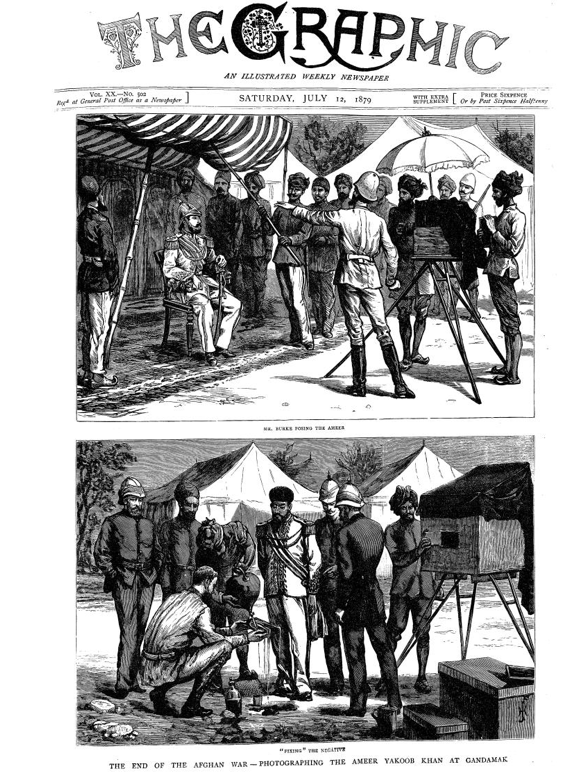

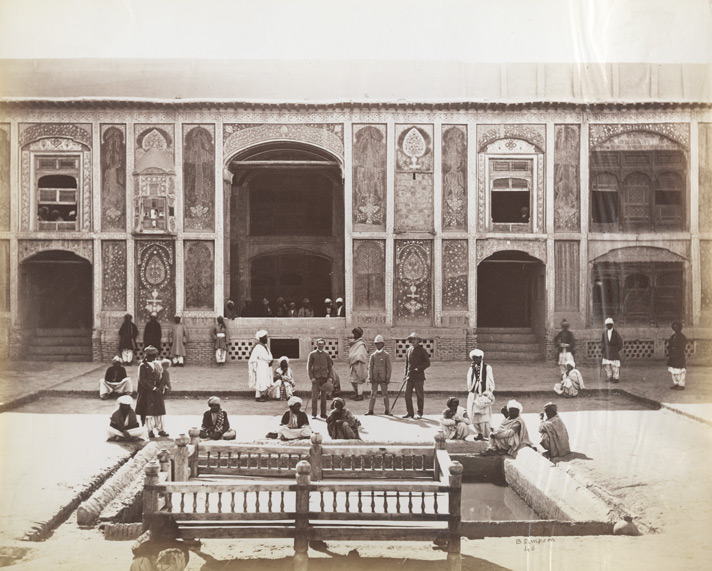
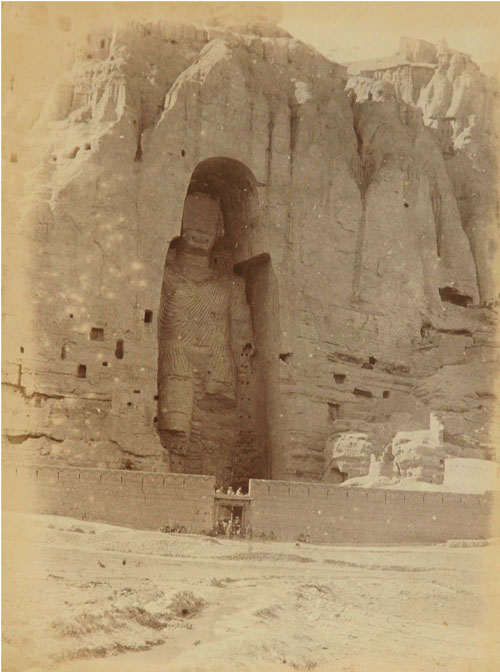
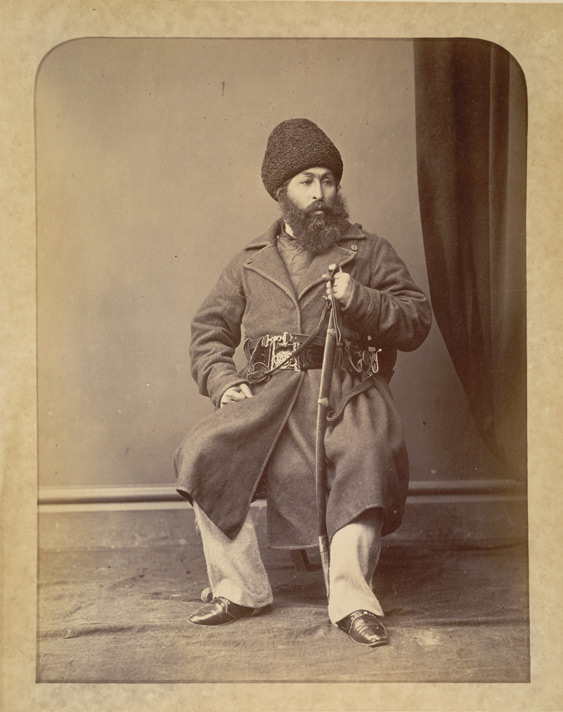
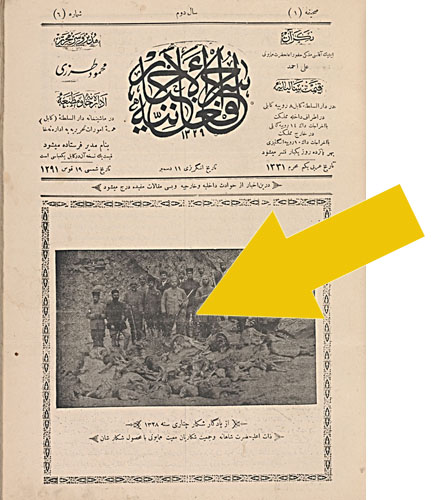
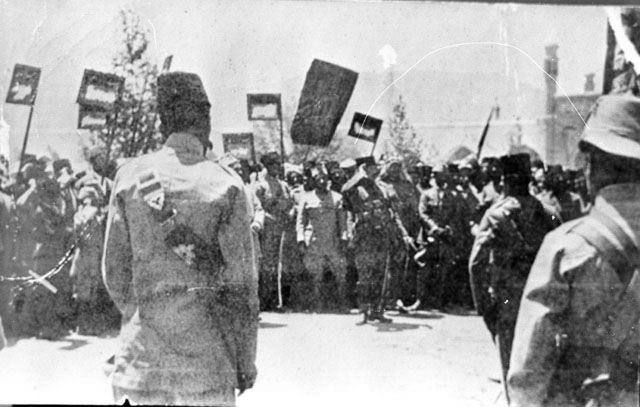
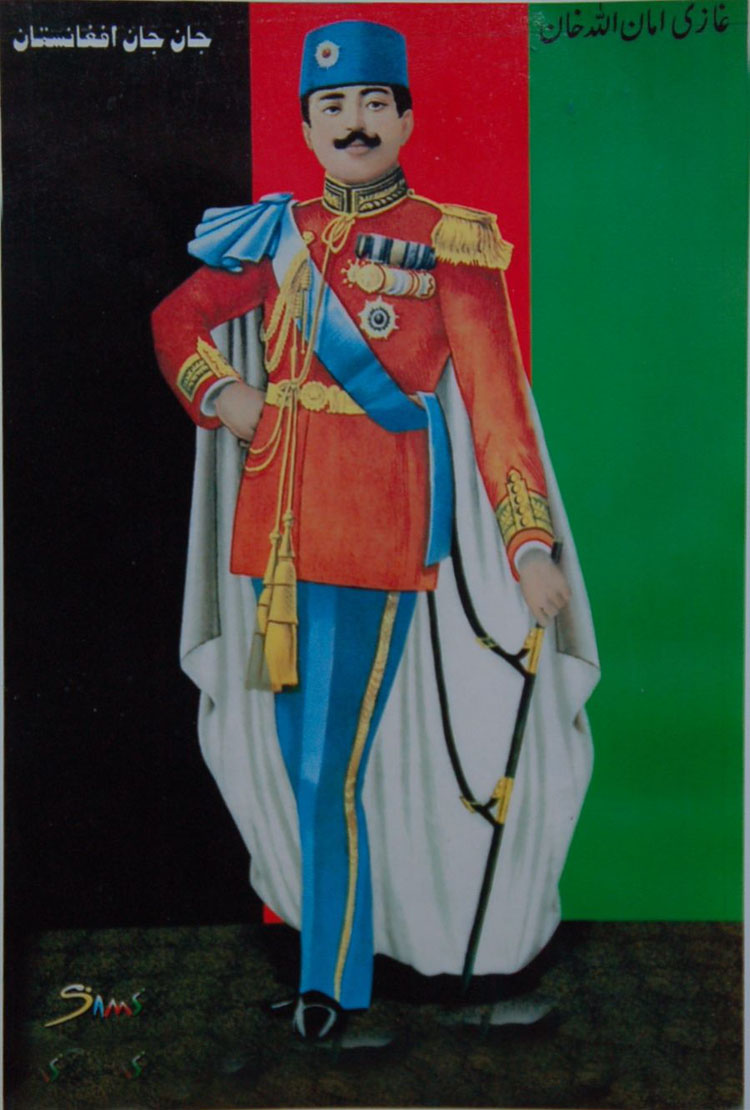
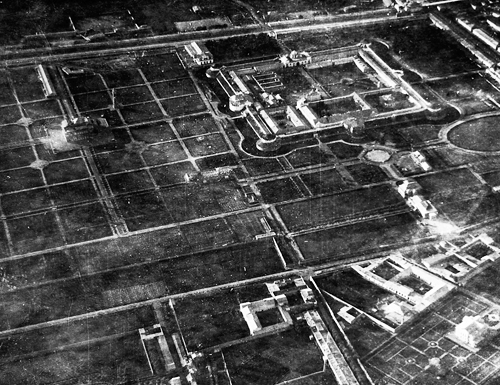
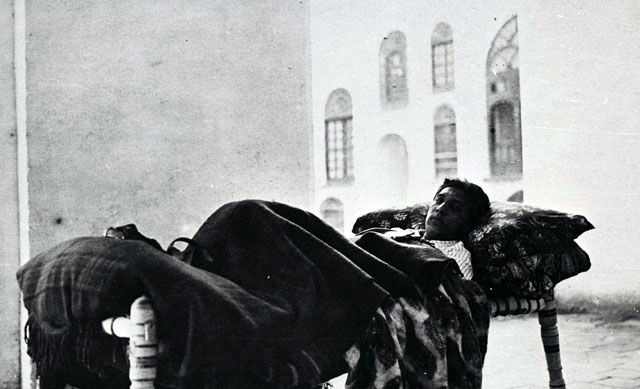
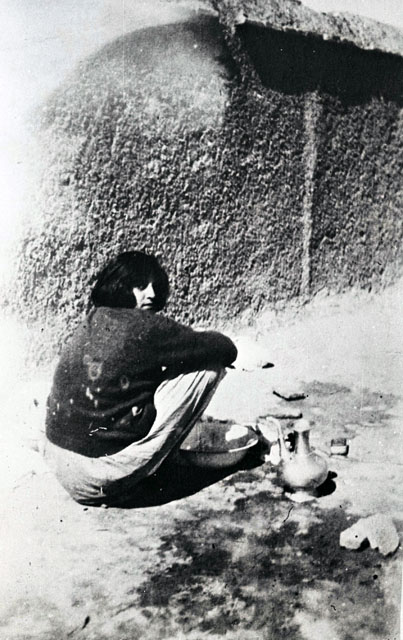
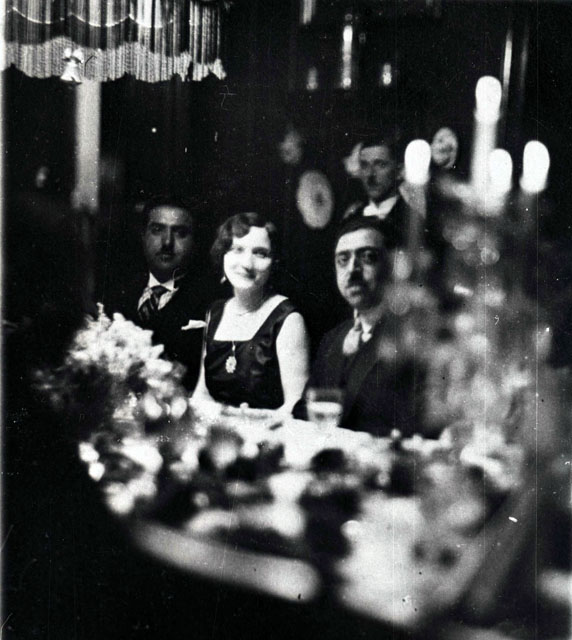
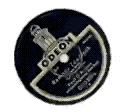
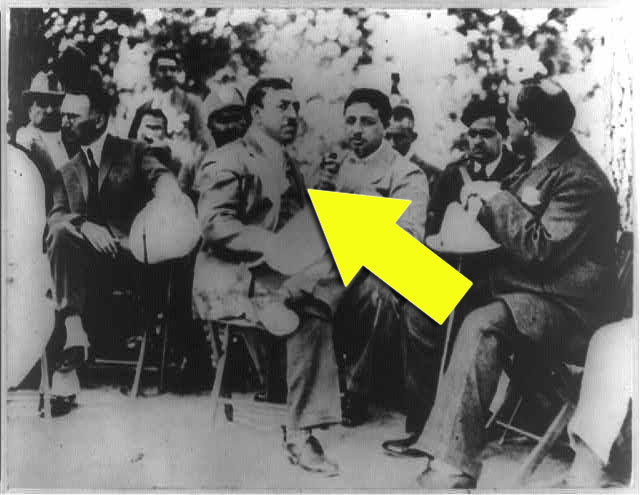
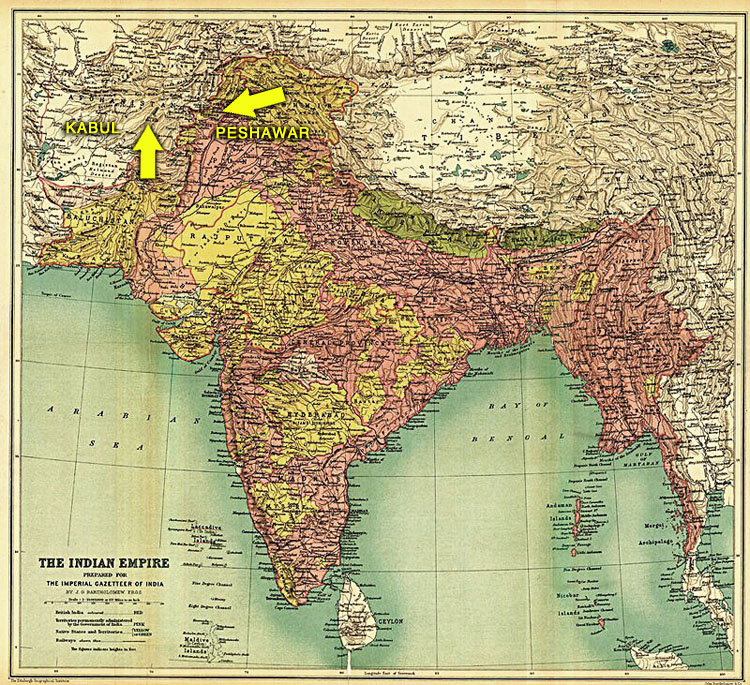
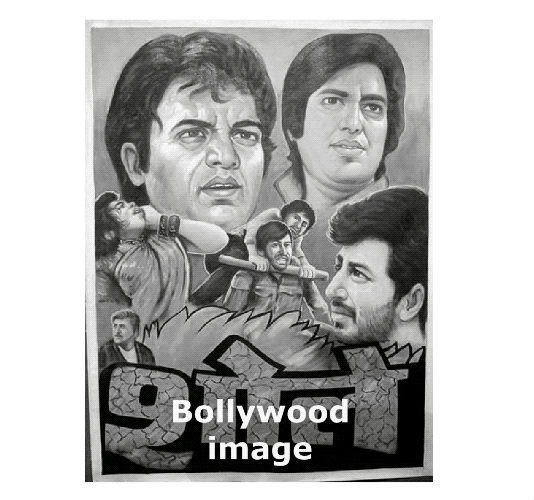
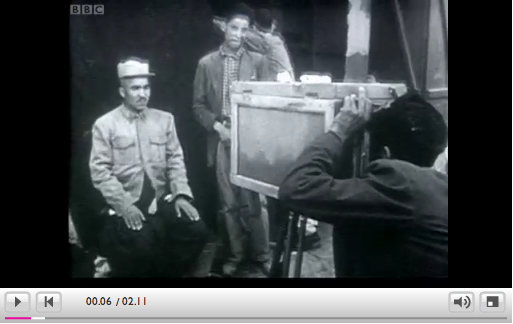
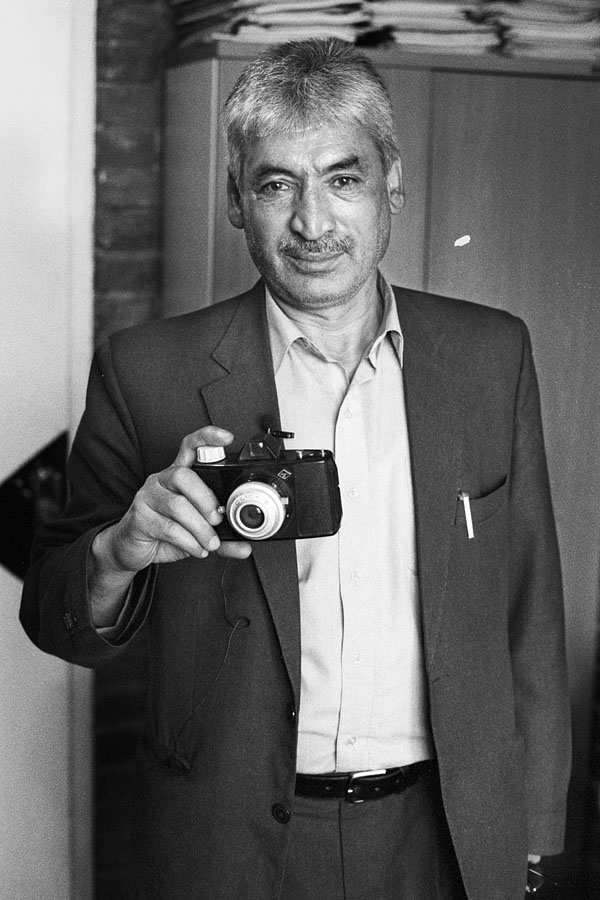
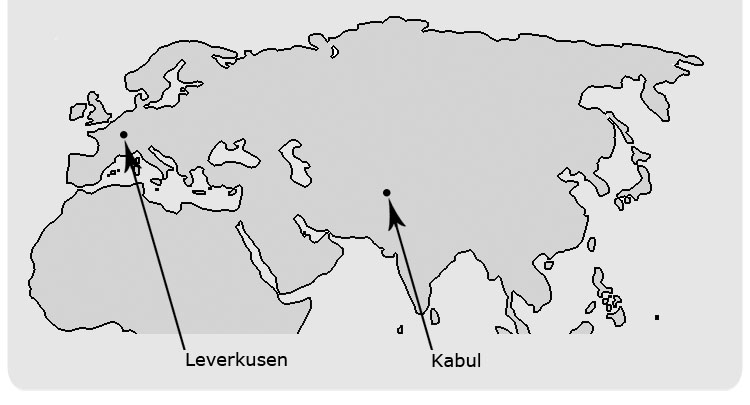
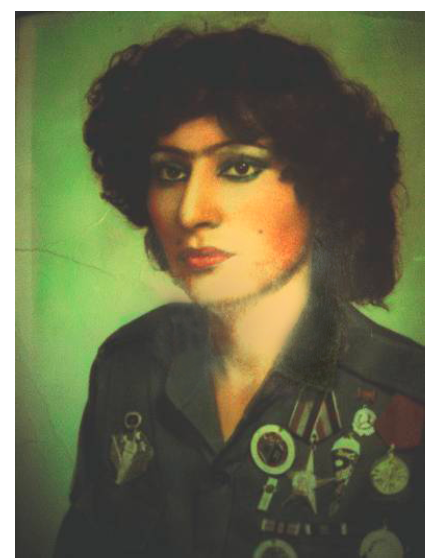
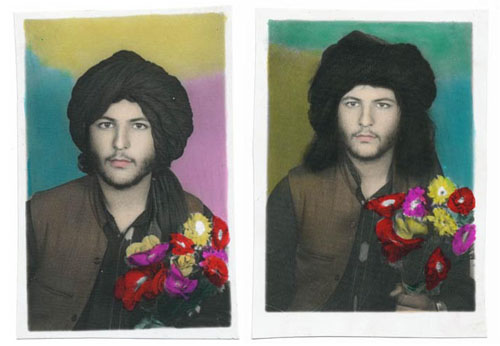
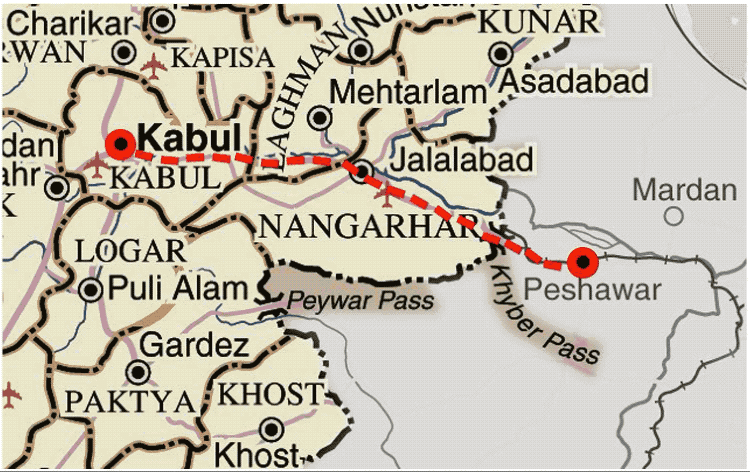

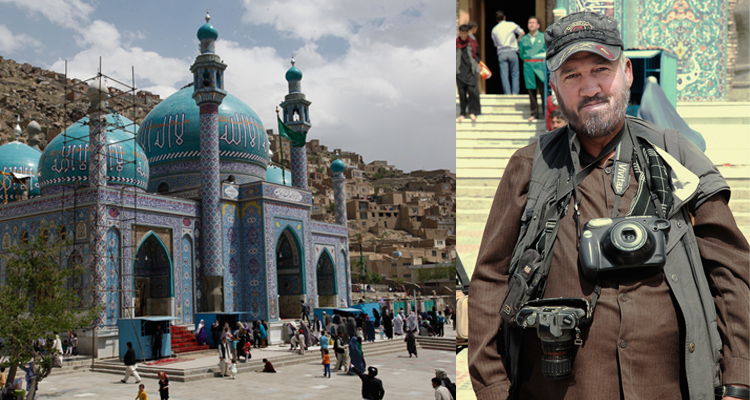
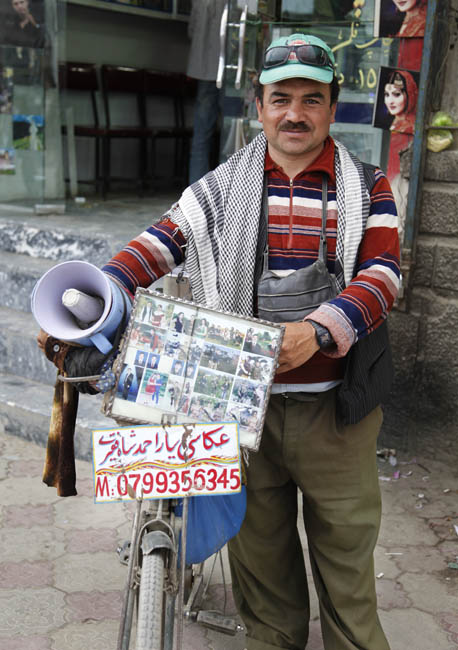
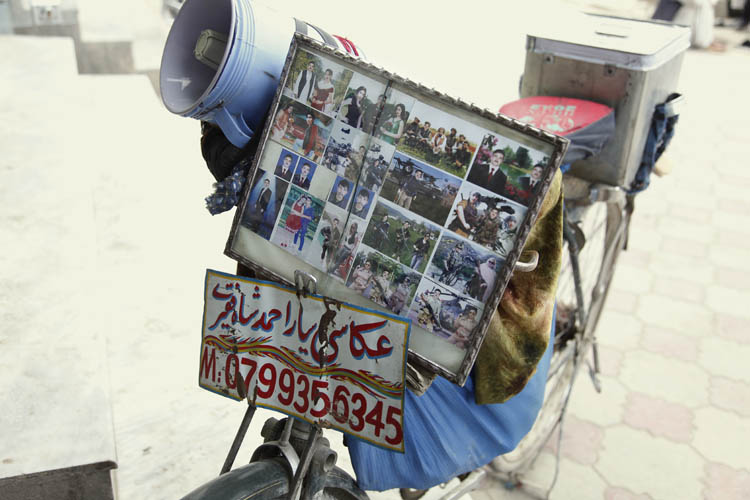
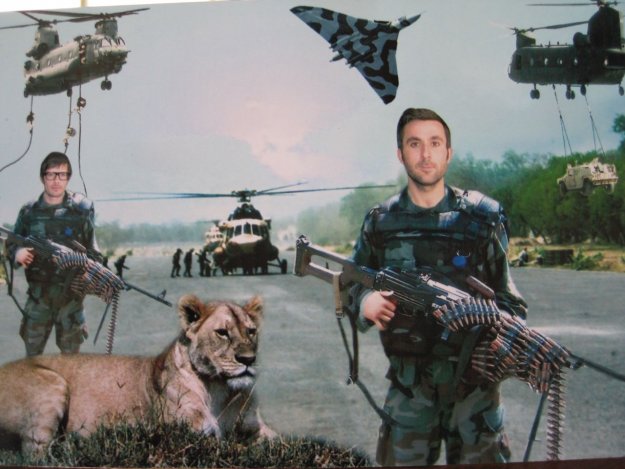
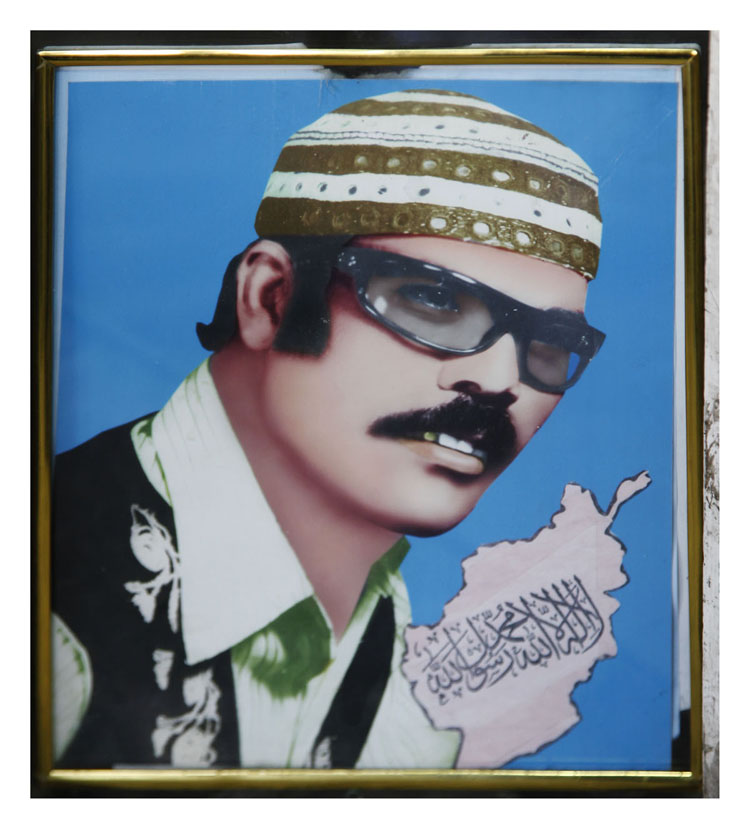
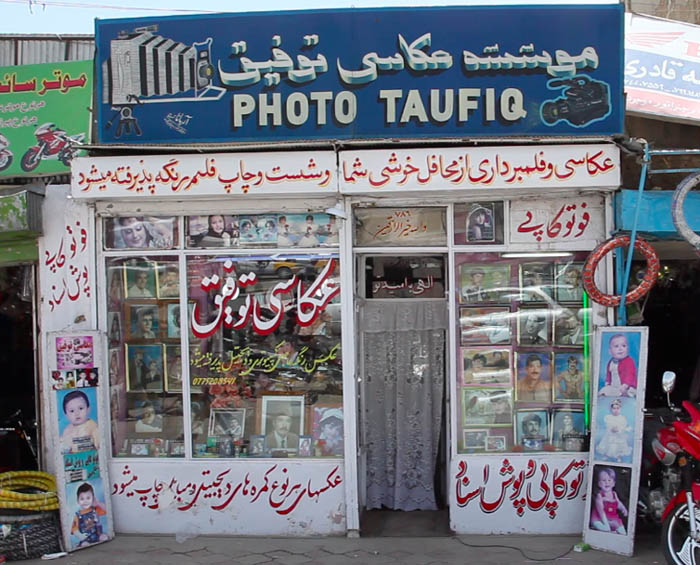


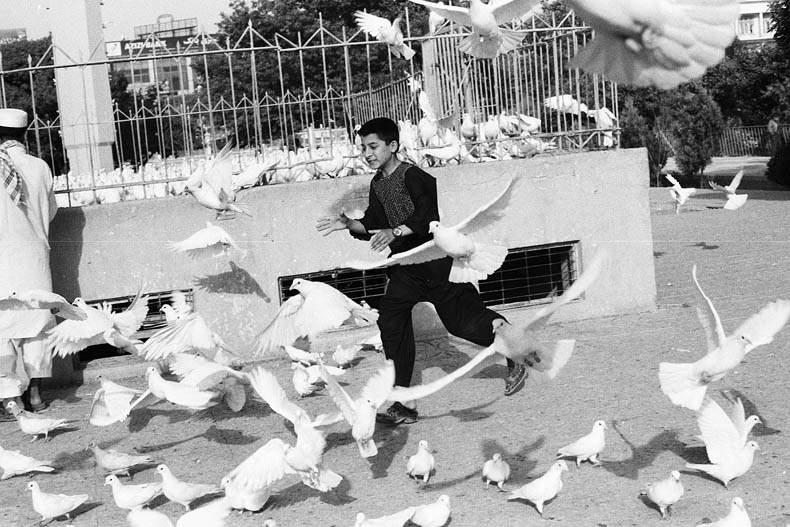
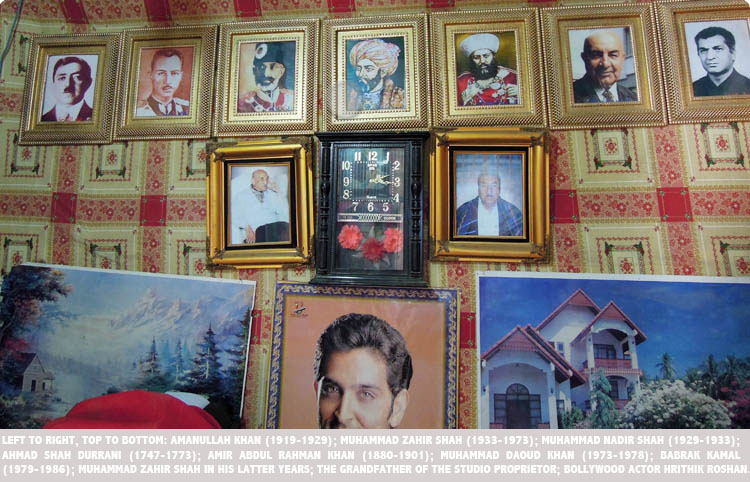


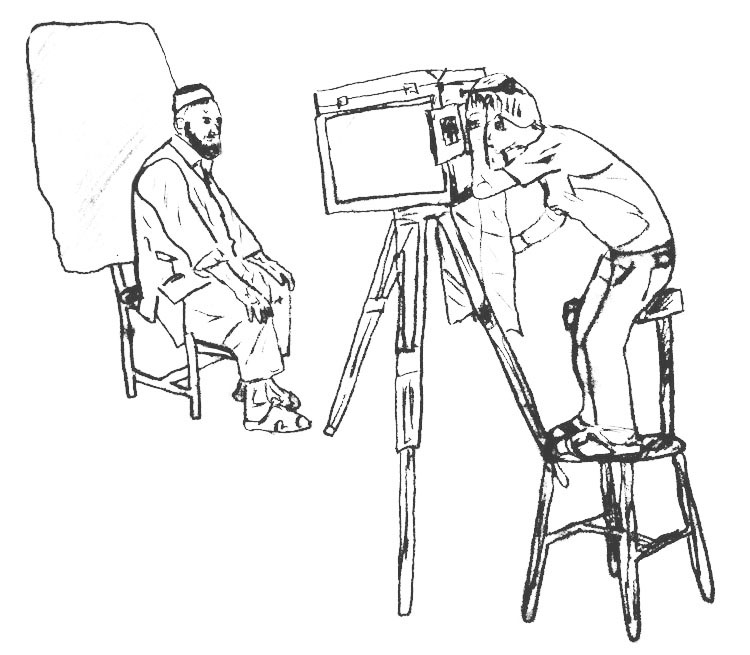
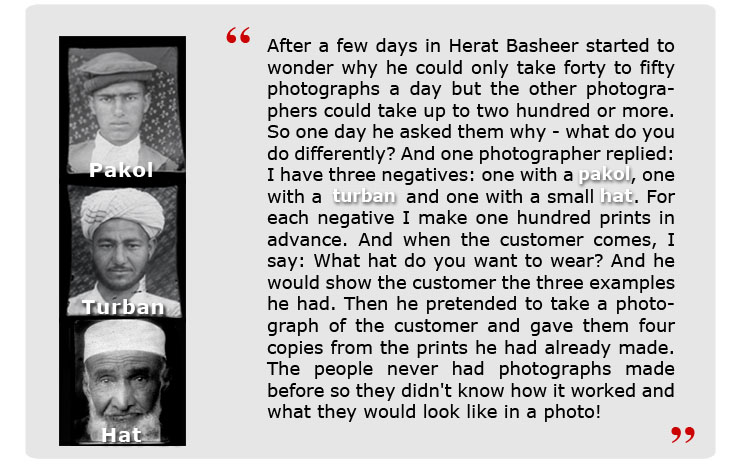
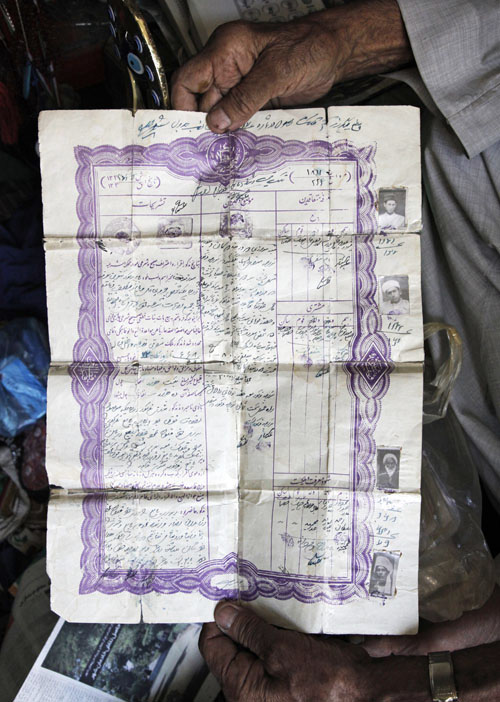
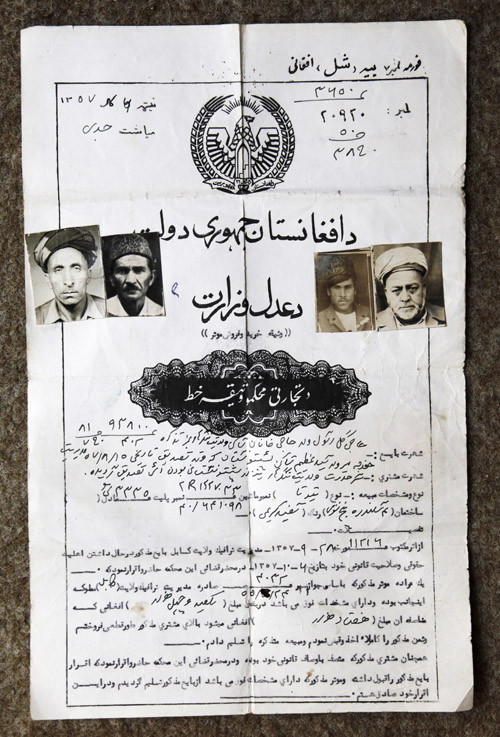

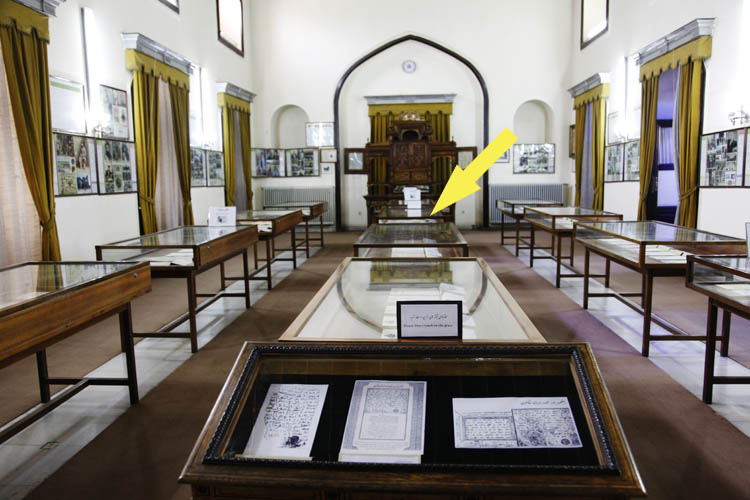
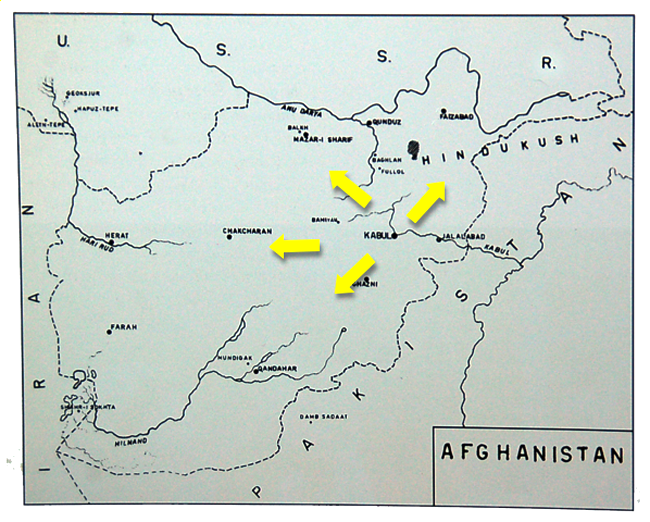
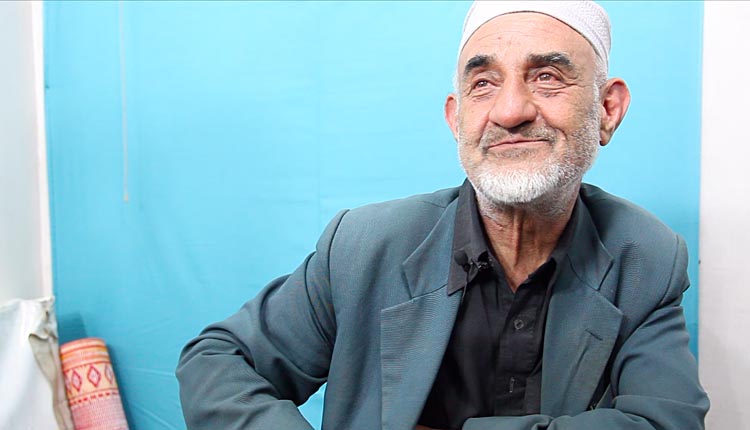

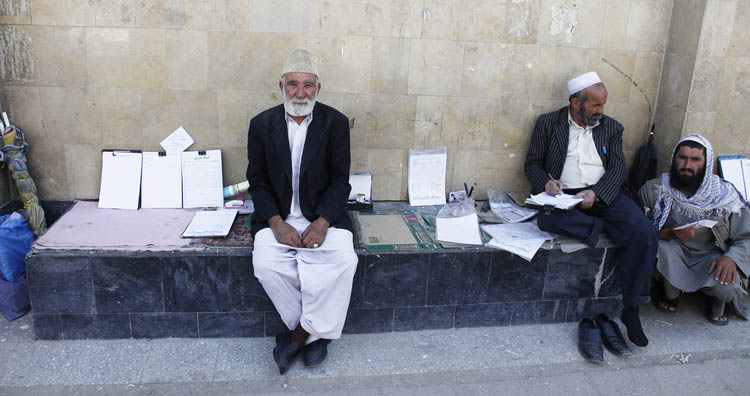
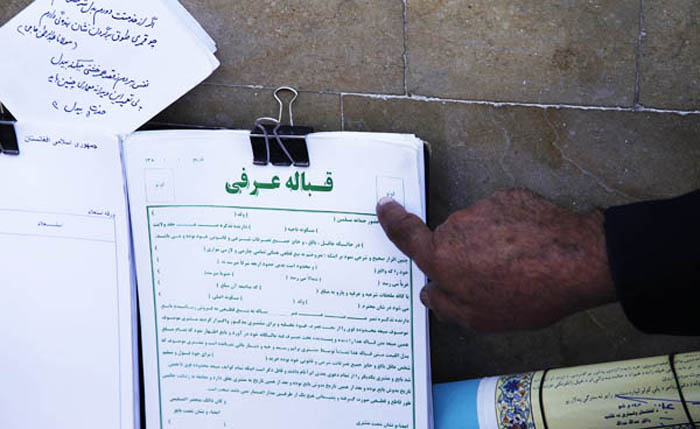
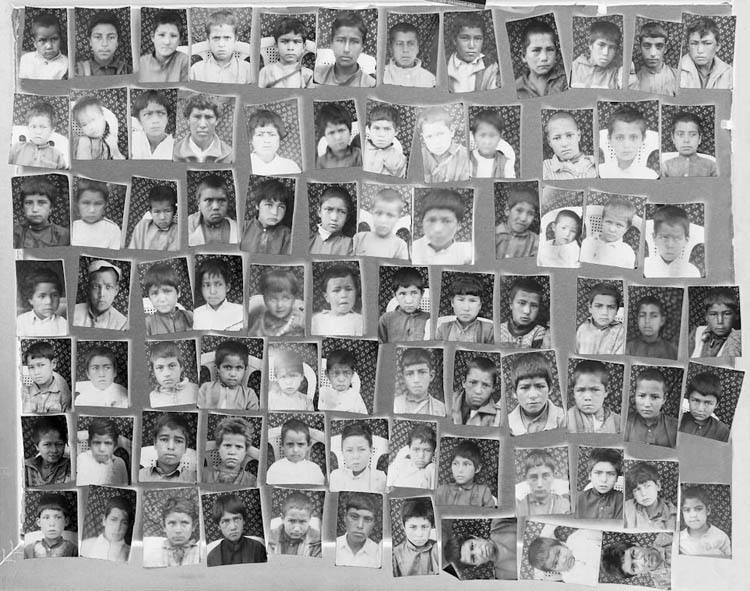
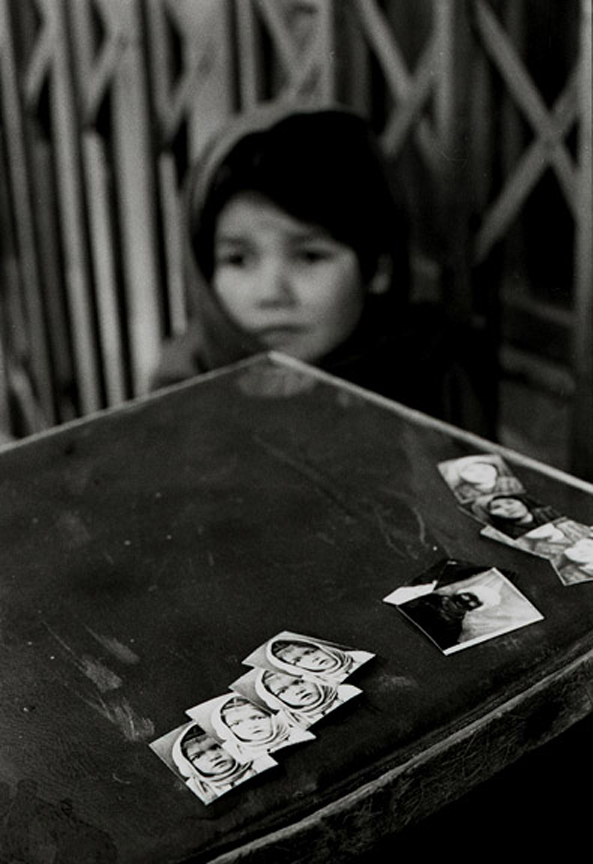
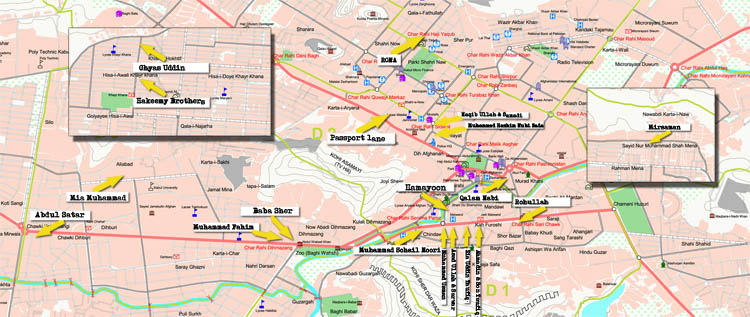
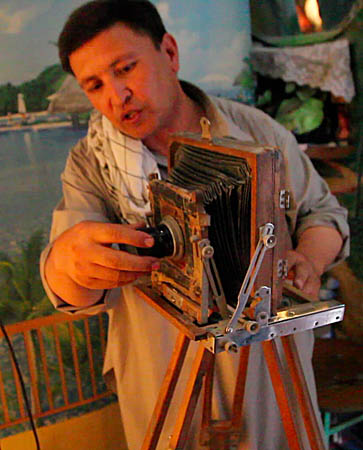
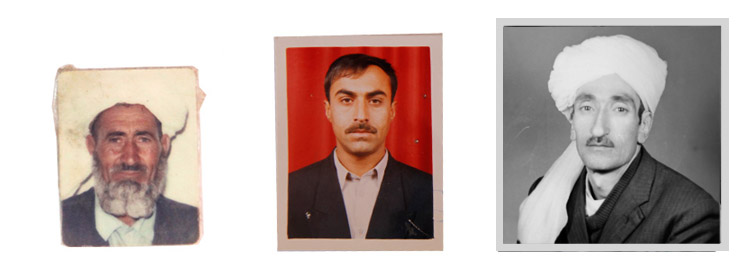
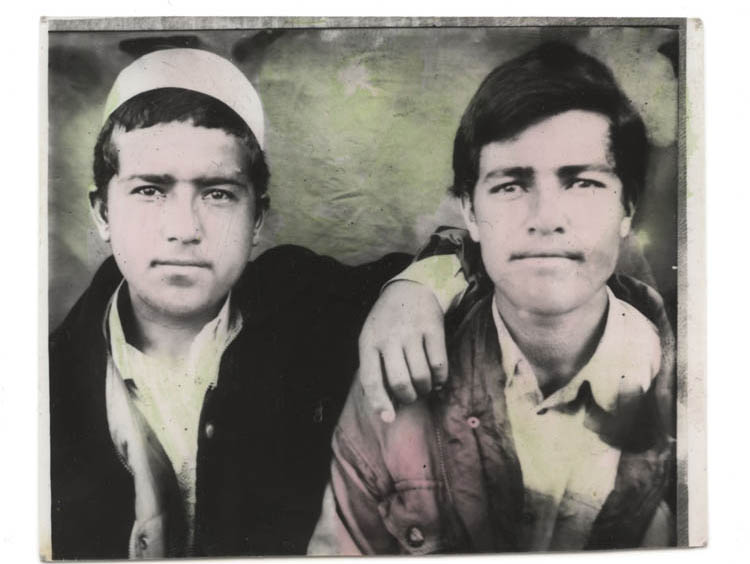
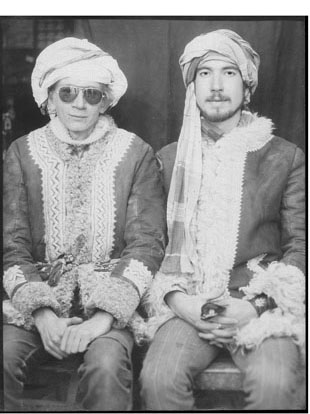 Courtesy of
Courtesy of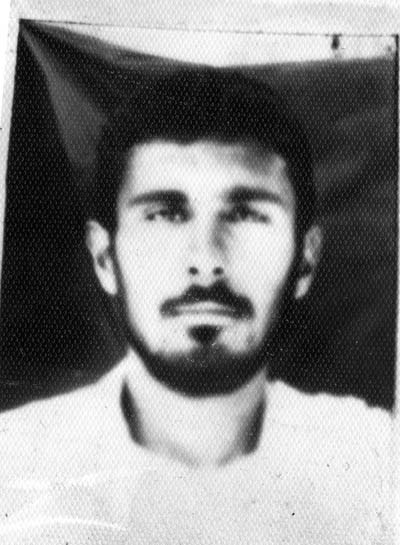
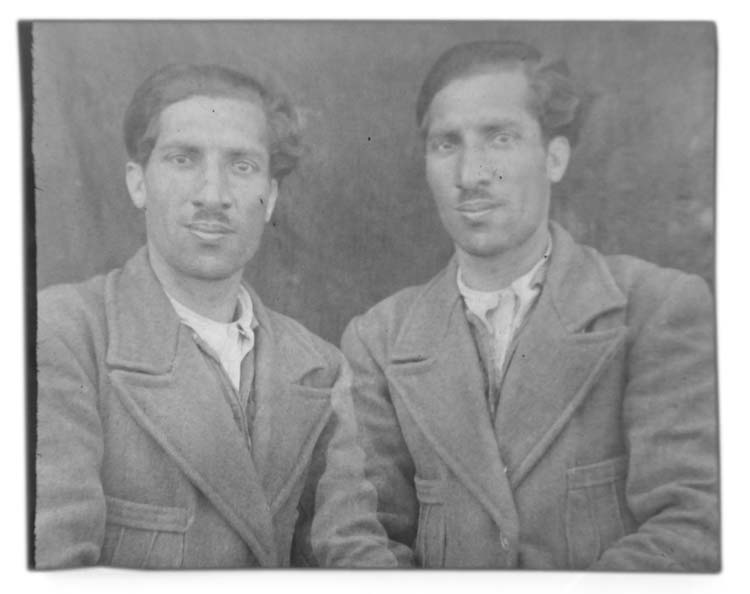
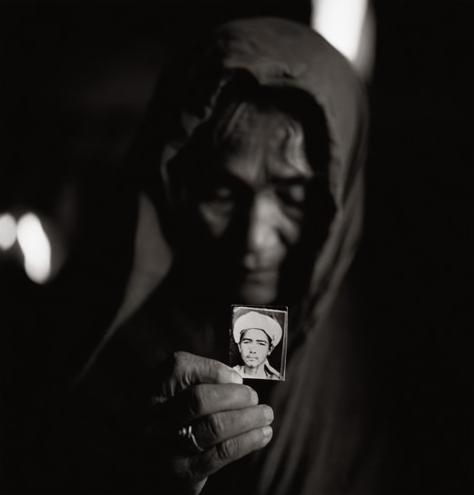
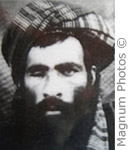

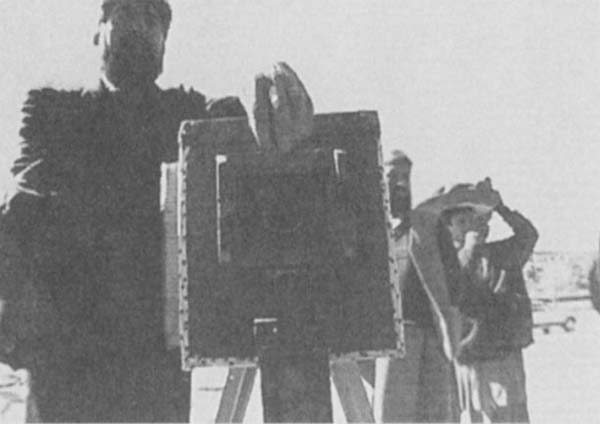
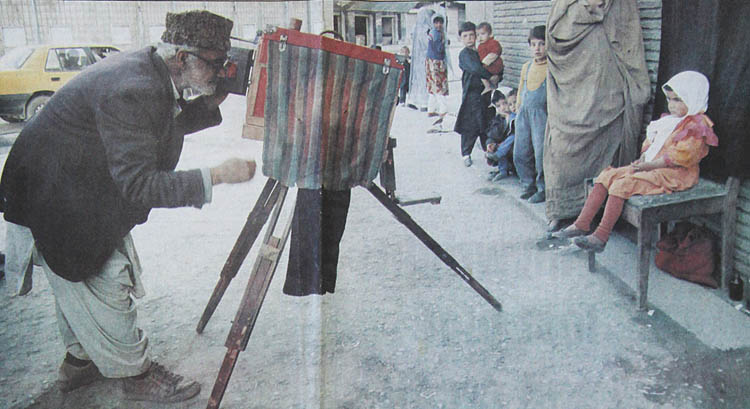
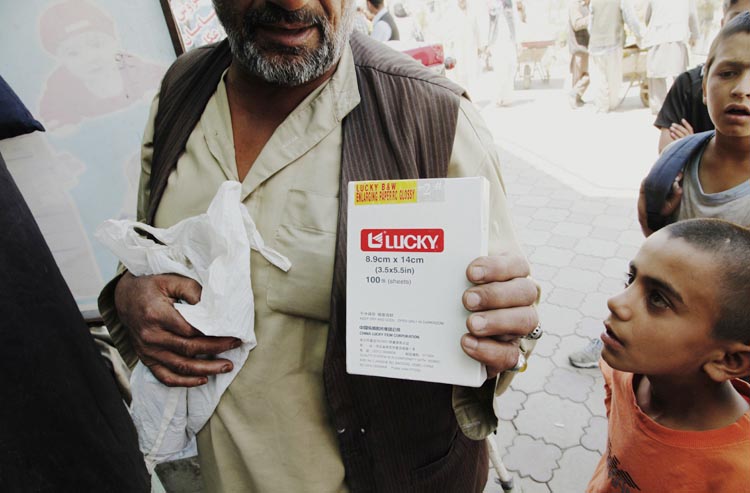
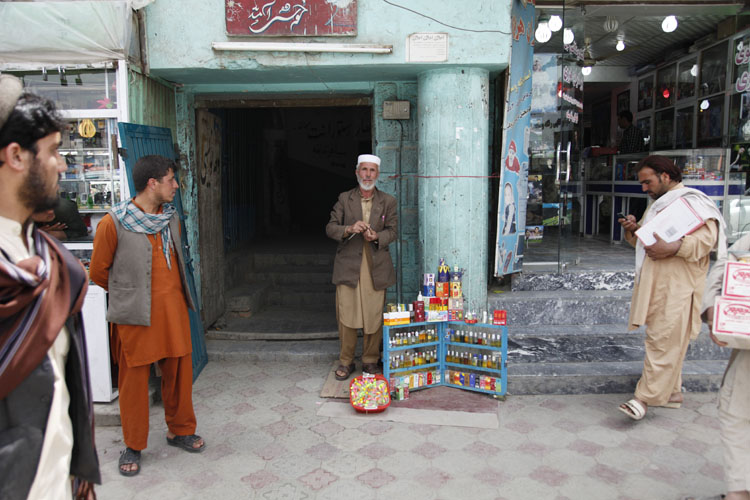
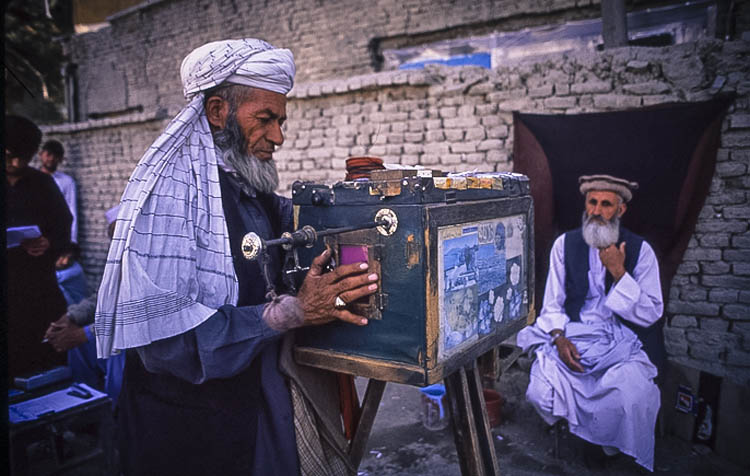
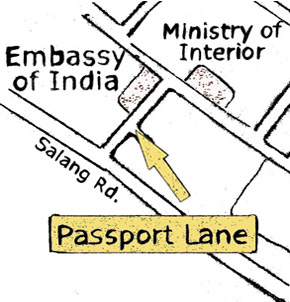 A photographer at work in Passport Lane, 2002. Scribes can be seen working in the background. Courtesy of Dave Banks ©.
A photographer at work in Passport Lane, 2002. Scribes can be seen working in the background. Courtesy of Dave Banks ©.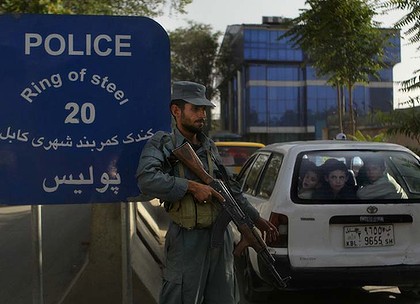
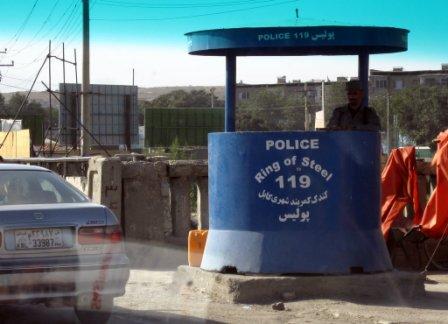
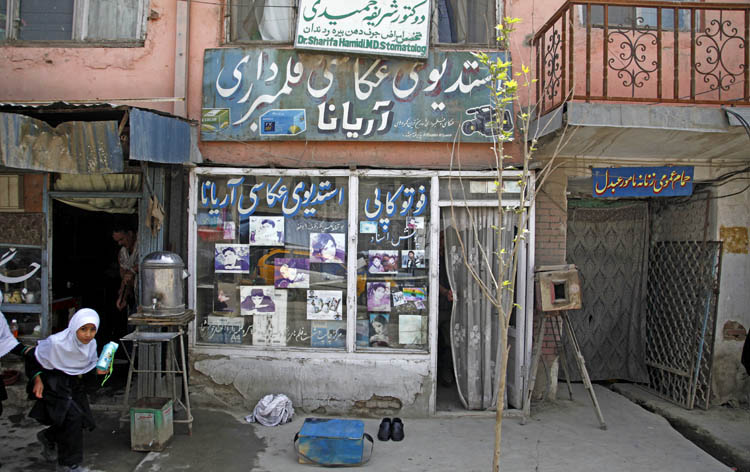
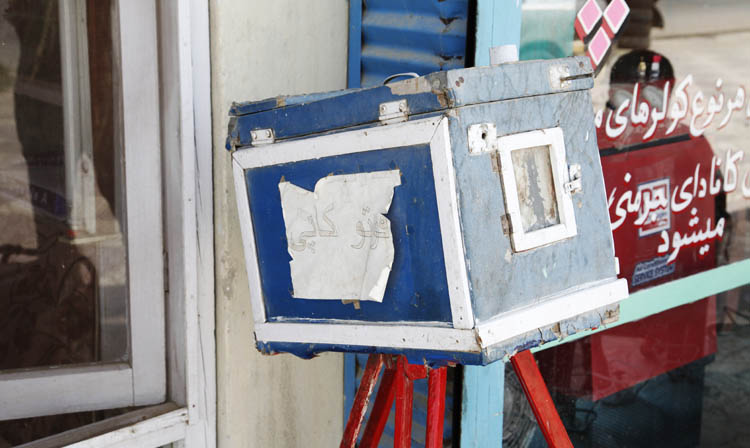
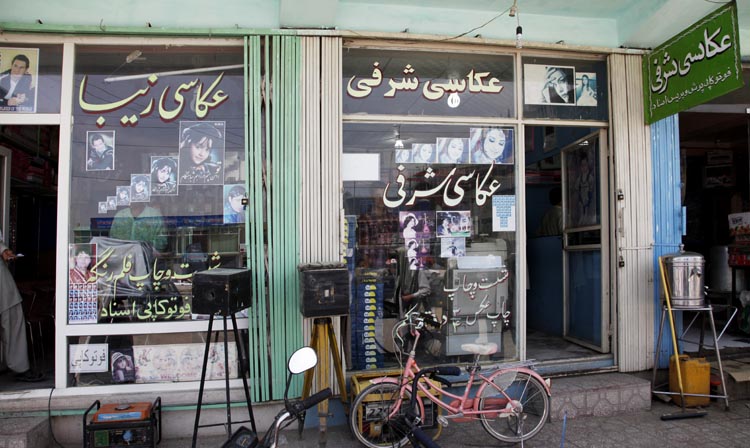
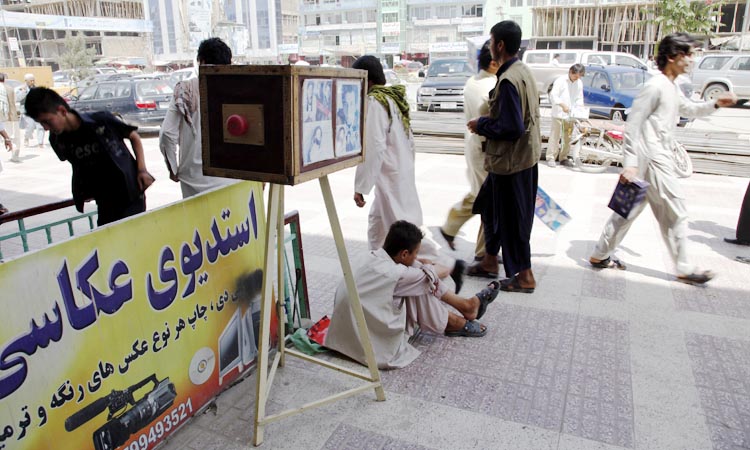
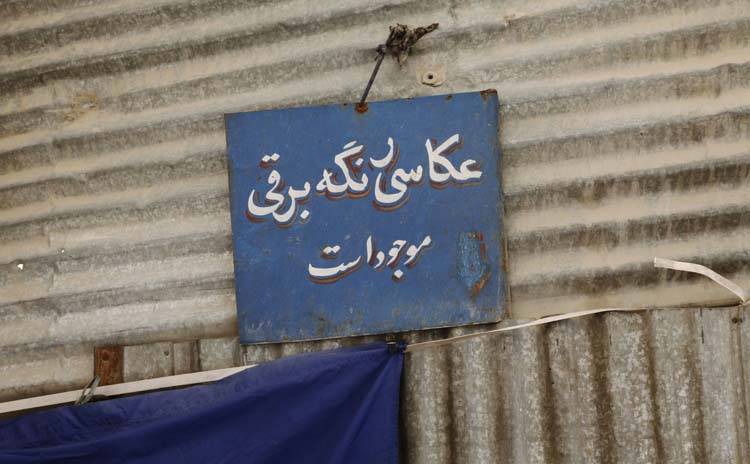 Electronic photographs.
Electronic photographs.